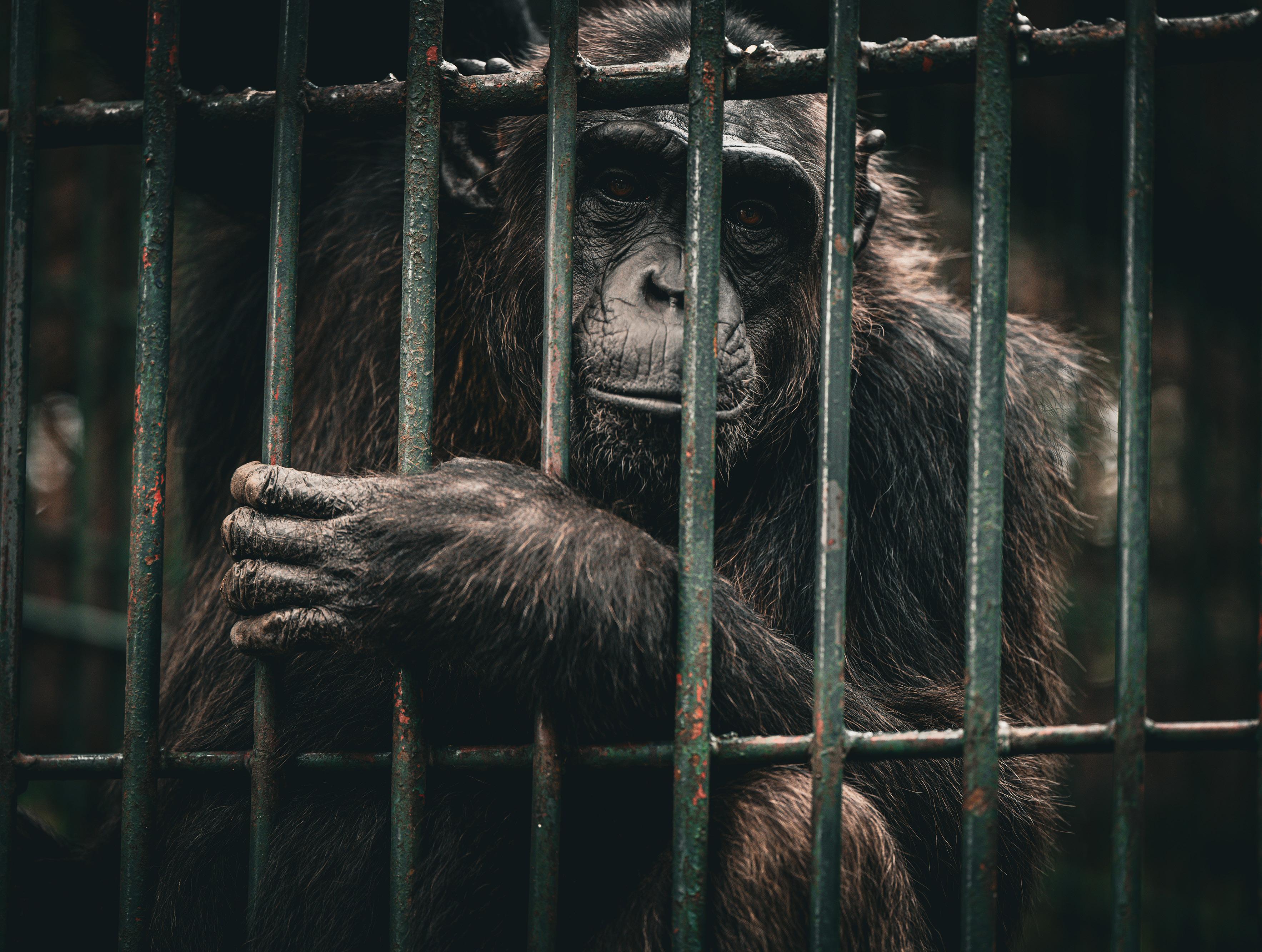
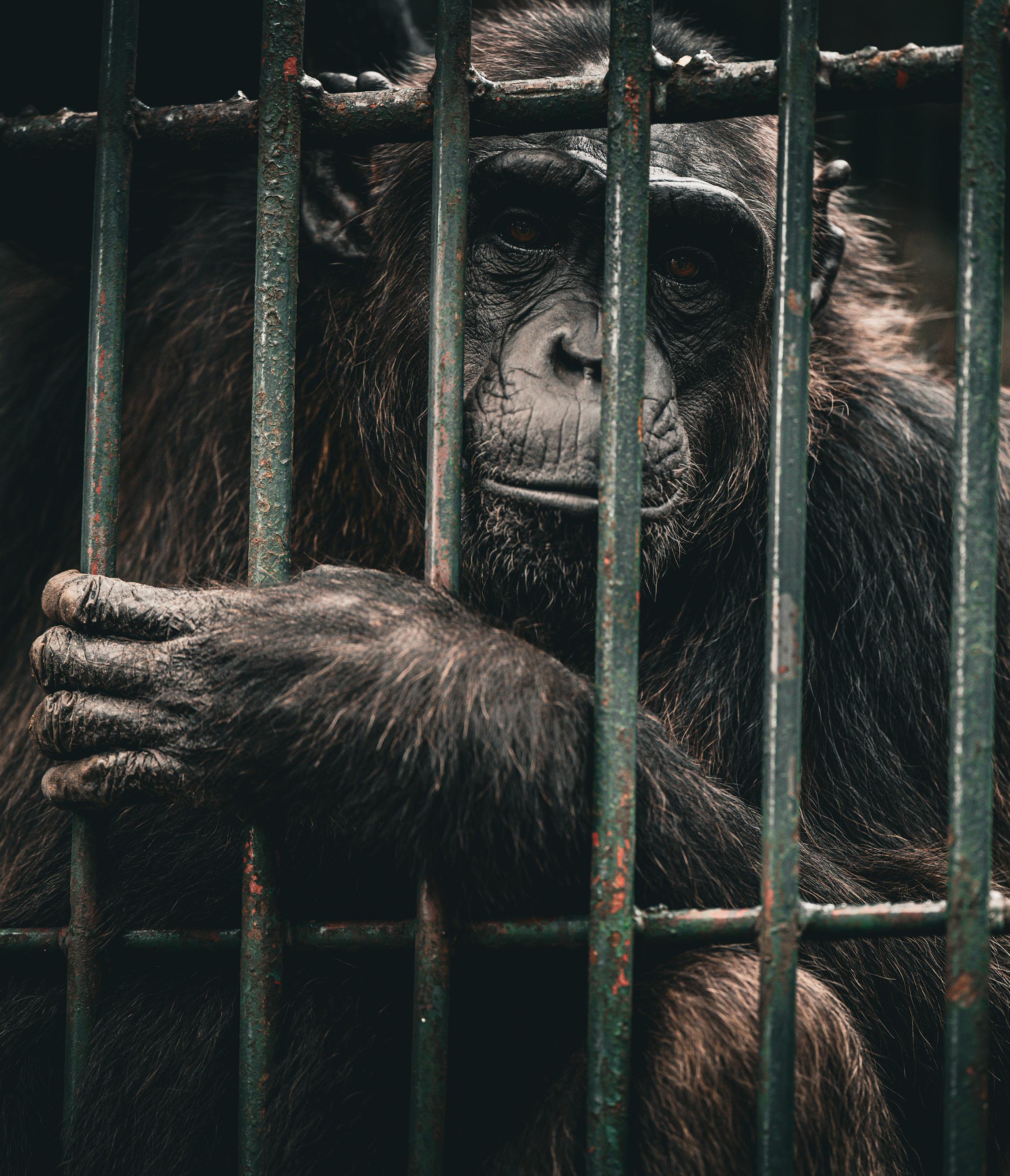
CAPTIVE COUSINS: THE PLIGHT OF GREAT APES IN ZOOS




CAPTIVE COUSINS: THE PLIGHT OF GREAT APES IN ZOOS

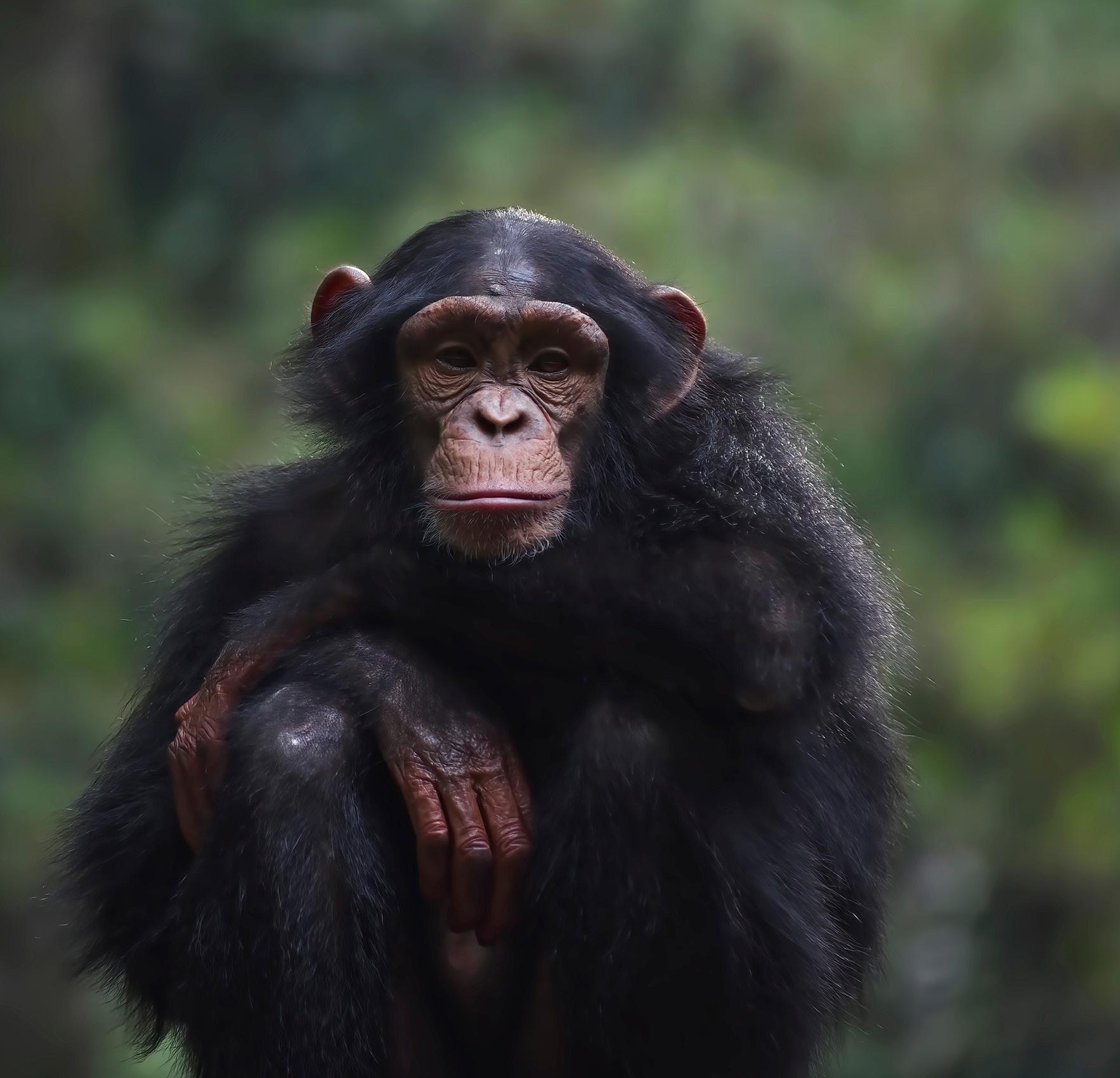
Great apes are often referred to as our closest cousins, and rightly so. Science tells us that we share more than 98% of our DNA with other apes, but what does this mean for us and them? It means that we all have long childhoods, long lives, and the need to live in communities of family and friends. It means that we share a remarkable level of intelligence and consequent need for mental stimulation. It means that we suffer when treated poorly. It means that we value our freedom. Great apes in zoos are so like us, and yet we deny them all of these things; reducing them to exhibits for our own entertainment.
This report explores the landscape of captive great apes, considering their health, welfare, living conditions, and the safety risks they pose to us and other captive animals, among other issues. It should not come as a surprise that our great ape cousins die young in zoos, they suffer injury due to enforced close proximity with others, and they pose a serious safety risk to their caregivers and zoo visitors. Disturbingly, the use of pharmaceuticals to curb depression and other mental health conditions in captive great apes is well documented. Stereotypies – repetitive behaviors that signal severe mental distress – are rife in great apes in zoos.
The result of this research points in one direction: towards the need to end great ape captivity for human entertainment in zoos.
We hope you will join Born Free USA in its work to protect wild animals from suffering and support our call to end the cruel captivity of non-human apes.
Angela Grimes, CEO, Born Free USA
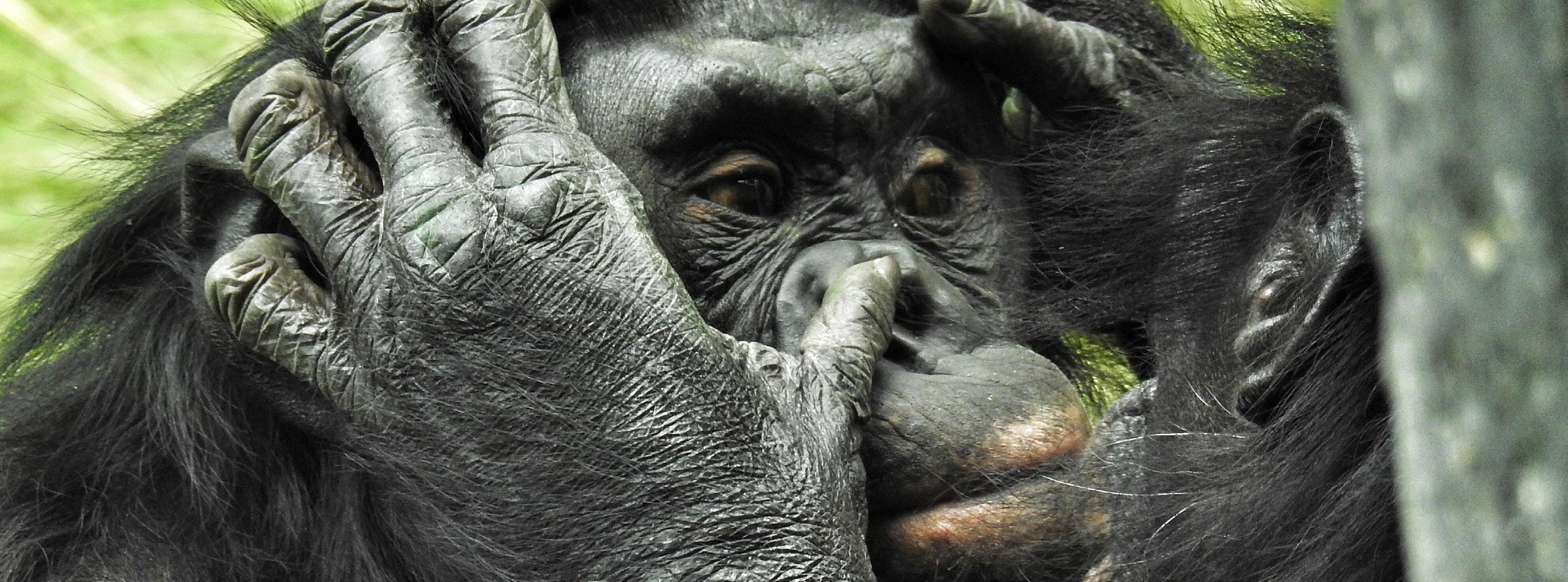
Prosimians – includes lemurs, tarsiers, lorises, and bushbabies.
Classification of primates has been subject to debate, conflict, and change over centuries – in particular as scientists came to terms (or did not, as the case may be) with evolutionary theory positioning humans as apes. For taxonomic purposes, the order of primates is divided into three distinct suborders, known in common language as prosimians, New World monkeys, and Old World primates. The suborder of Old World primates is further divided into superfamilies of Old World monkeys and apes, with the latter group encompassing humans, chimpanzees, gorillas, bonobos, and orangutans. Gibbons are also in this group but usually classified as a separate “lesser ape” family instead of that of the great apes. There are many super and sub classifications that further explore primate lineages, but for the purposes of this report, our focus is predominantly on great apes.
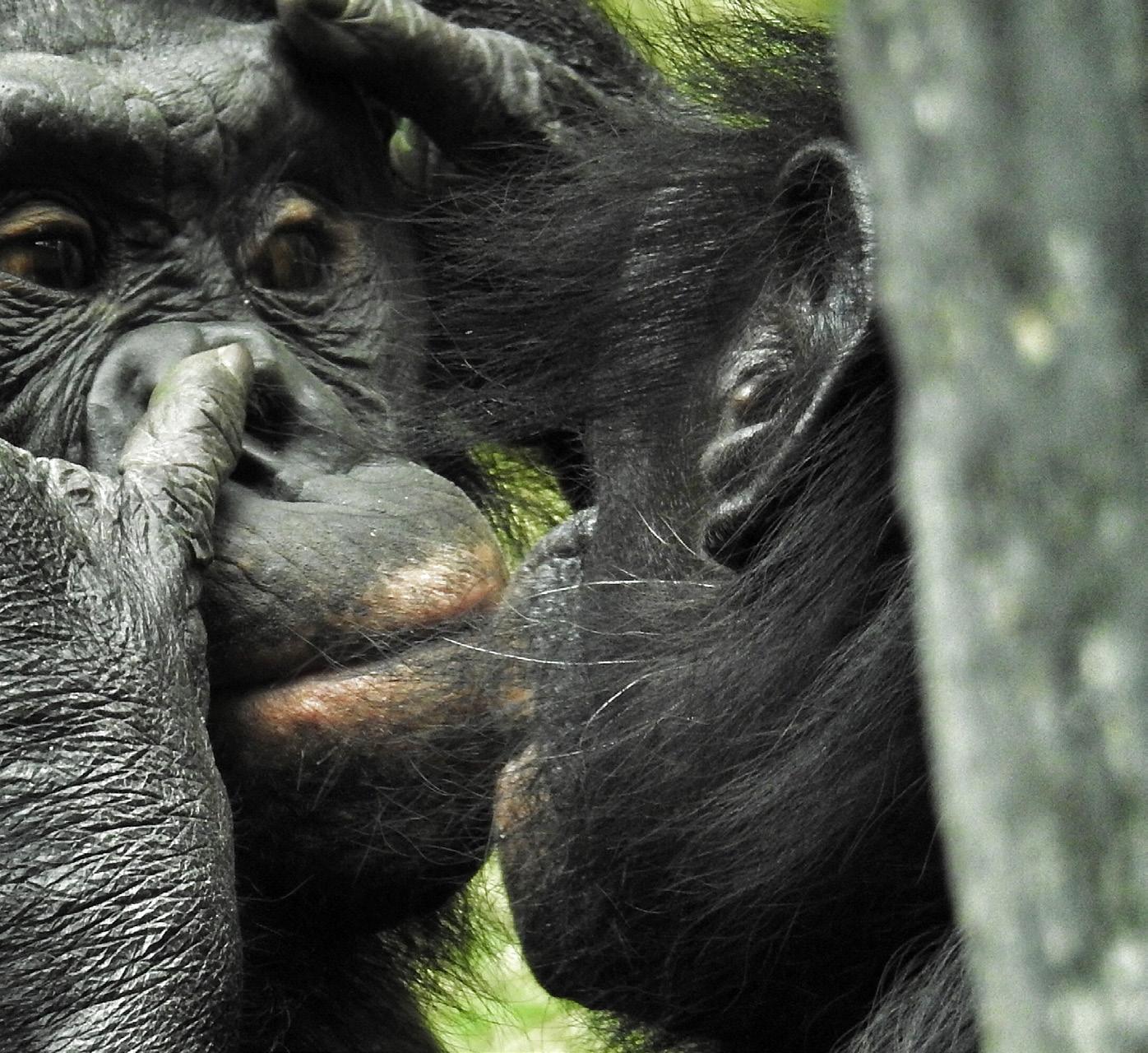
Old World monkeys – monkeys found across Africa and Asia made up of between 130 – 140 species, dependent on classification models employed.1
New World monkeys – monkeys found across the Americas, made up of around 160 species, dependent on classification models employed.
Apes – made up of chimpanzees, gorillas, orangutans, humans, and gibbons.
All apes, including humans, share defining characteristics. They are profoundly social animals who live, and maintain relationships, in complex social groups and hierarchies. They have large brains relative to body size, making them particularly adept at problem solving. They have forward-facing eyes, the ability to grasp and manipulate objects using opposable thumbs, and use tools. They have few offspring, long childhoods, and a high capacity for learning. They have hair, rather than fur, and no tails. Many of these characteristics are shared, to a greater or lesser extent, with other primates.
The biological proximity between humans and other apes provides a unique opportunity to understand and empathize with their suffering when they experience harm. It also allows us to predict what practices may cause harm to primates based on our own experiences and those of others around us. As such, when apes are held captive in zoos, denied the ability to express natural behaviors, have their young taken from them, are prevented from choosing their friends and mates, and experience trauma because of the foregoing, we can understand their suffering as fellow primates. For these, and other reasons that will be explored in this report, we maintain that primates, and apes in particular, should never be held captive for human entertainment.
Apes, and great apes in particular, have long fascinated humans. African and Asian communities in the areas native to great apes have been familiar with them since time immemorial. The first recorded western interaction with chimpanzees – the precursor to their modern-day exploitation in captivity – dates back to 1698 when British scientist, Edward Tyson, dissected a chimpanzee who had died in transit from Angola. 2 Western scientists first found evidence of the existence of gorillas in 1847, when a skull was discovered in Gabon by American, Thomas Savage. Following Savage’s discovery, Frenchman, Paul Du Chaillu, became the first European to study gorillas in the wild.3 Orangutans were first categorized in Western science in 1758 by Charles Linnaeus – the scientist responsible for a system of taxonomic ordering of living beings, which still forms the basis of categorization of species today. While these are some of the earliest records of western interactions with non-human apes, archeological findings in Egypt provide evidence of other primates being held captive by humans since the Bronze Age.4
Studbooks have been kept to track major life events of wild animals in zoos since the first studbook for bison was started in 1932. The studbooks offer a glimpse into the history of zoo captivity. It is unclear when great ape studbooks began, but thanks to partial backdated data, we are able to chart some of the early presence of great apes in modern zoos. Like many species kept in zoos, early populations were captured from the wild in the name of “science.” While this practice became less common during and after the 1970s, in part thanks to the ratification of the Convention on the International Trade in Endangered Species of Wild Fauna and Flora (CITES), wild capture of orangutans for North American zoo collections has continued until as recently as 2003; wild capture of gorillas as recently as 1988; and wild capture of chimpanzees as recently as 1978.
According to available North American region studbook data, 31% of historic Western Lowland gorilla populations in
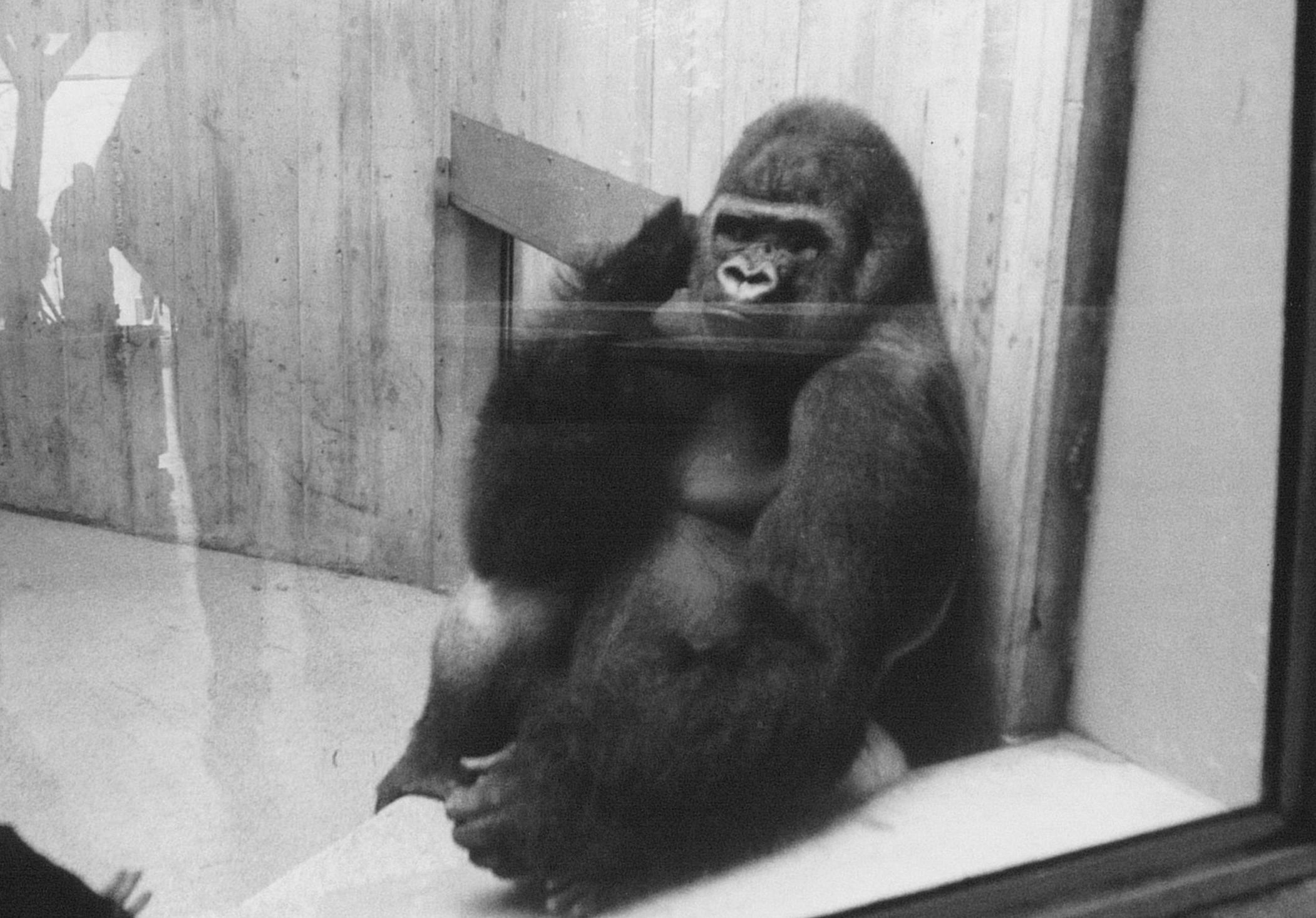

zoos were captured from the wild (n=278), as well as 21% of chimpanzees (n=276), and 27% of orangutans (n=258). The earliest studbook records of wild capture date back to 1911 (gorillas), 1952 (chimpanzees), and 1919 (orangutans).
By 2016, gorillas could be found in at least 122 zoos globally; chimpanzees and bonobos in 188 zoos globally; and orangutans in 143 zoos globally.5
Data from 2016 gleaned from the International Species Information System (ISIS) database provided the (conservative) figure of 3,063 great apes in zoos globally at that time, and 23,444 primates in total. These figures only represent those from zoos that provide data to the ISIS database, which is generally limited to accredited zoos or those with greater financial resources. As such, this should be considered a minimum rather than a complete inventory. The most populous family of primates in zoos are Old World monkeys.6
While studbook data provides the earliest dates that populations were tracked, evidence shows that great apes have been held captive in zoos since at least 1836. Tommy the chimpanzee was the first great ape to live at a zoo in the United Kingdom – London Zoo – “for any length of time.” Tommy was dressed in clothes to keep him warm and is denoted in an engraving by artist, George Scharf. He died from tuberculosis just six months after he arrived. He was soon replaced with orangutan, Jenny, who was said to be the inspiration for Charles Darwin’s interest in great apes and work around this subject. 7 Jenny was purchased by the zoo for £15018 from an animal trader. Artists’ impressions of the juvenile showed her dressed in clothing. She died some time before 1839, when she was replaced by a “new” Jenny. London Zoo archives document Jenny #2 being given cups of tea and having a cap put on her head, which visitors found “laughable.”9
The first record of a gorilla held in a modern-day zoo dates back to 1876, when a two-year-old male called Mpungu was brought to Berlin Zoo. It is believed that other zoos may have attempted to keep gorillas during the 1800s for short periods of time, with the captives dying in transport, after a few months, weeks, or even days.10 Mpungu was passed around from Berlin, to London, to Hamburg, and died within a year of being sold into the zoo trade.
Somewhat telling with regard to the failure of keeping gorillas alive in zoos, the first captive birth of a gorilla was not until 80 years after the first gorillas were snatched from their wild homes. Colo was born in Columbus Zoo in Powell, OH, to wildcaptured parents. She lived until 2017.
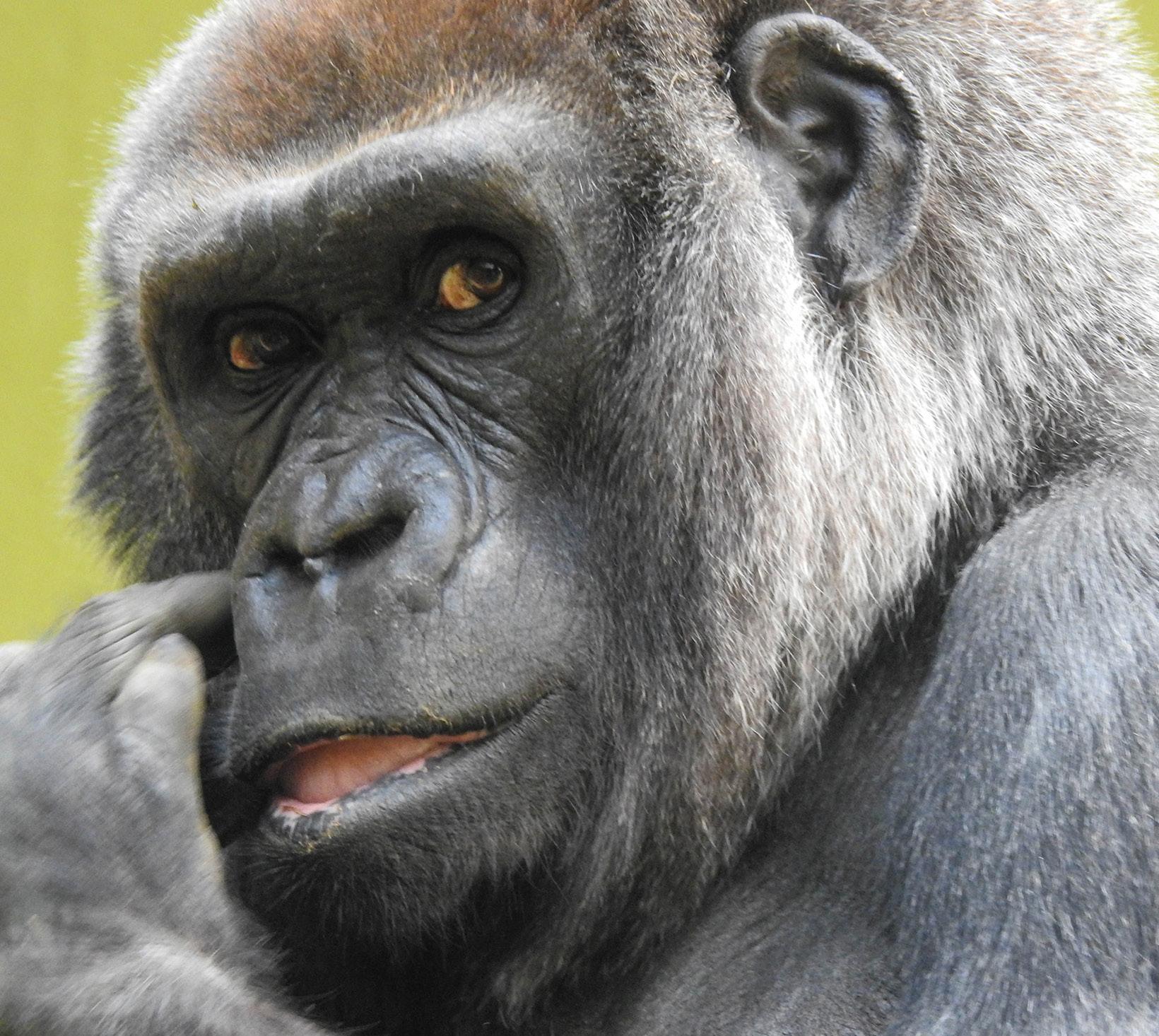
8 Note that it is unclear from records whether
time of purchase. If

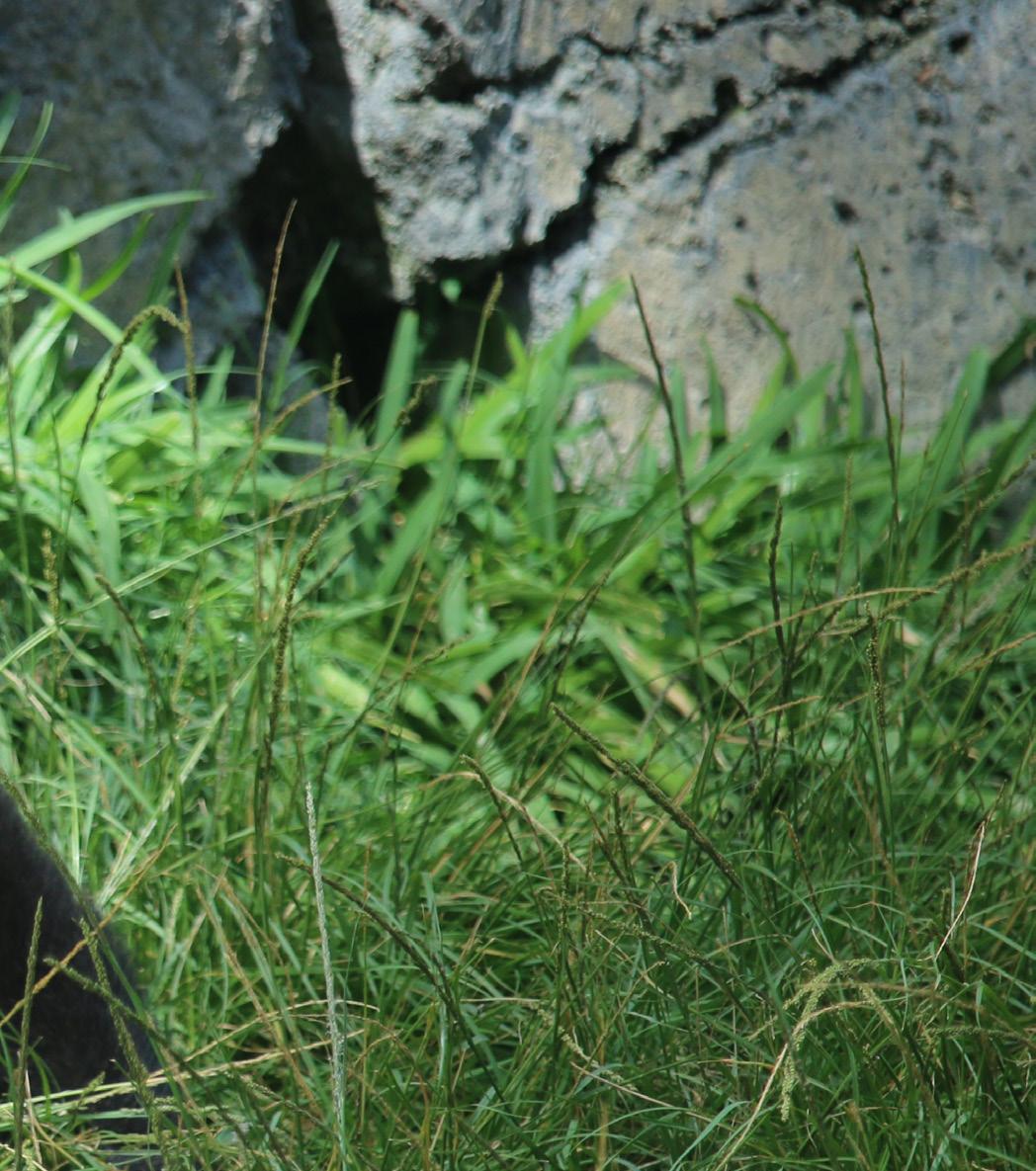
The most recently available North American regional studbook for Western Lowland gorillas – the most common gorilla species kept in zoos – cites the zoo population at that time at 346. Forty-eight percent (n=166) of the population are males and 52% (n=180) are females. Of these, 22 of the documented population were captured from the wild. The average age of living gorillas with known or estimated birth dates is 19.98 (median = 18.85) years, with the oldest individual with a known birth date aged 57 years old and the youngest aged six months.
Of the historic population, the average age at death for those with known or estimated birth dates was 15.76 years old (median = 11.77). Forty-one percent (n=219) of gorillas with a known or estimated birth date died before they reached five years of age, with 24% (n=126) dying within two weeks of birth. Forty-eight percent (n=889) of gorillas died before the age of 10. Of the historic population, 31% (n=278) were wild-caught.
Some published data 11 suggests that improvements in husbandry over time have increased longevity for gorillas in zoos. A paper published in 2023 states that maximum longevity for gorillas has increased by 62% to 54 years in the 30 years to the end of the last century. However, this data is misleading. While maximum longevity may be significantly higher and age at death may have risen over the years, the average age at death for gorillas in zoos is around 26 (median) – 30 (mean) years old. Many zoos claim that while life expectancy for gorillas in the wild is between 30-40 years old, in human care they may live into their 50s or 60s.12, 13, 14, 15 While technically true, this appears to be misleading as 76% of the deceased gorillas in zoos died before the age of 30. Only seven individuals (0.8%) in the historic population of gorillas have lived beyond the age of 50 and only two (0.2%) beyond the age of 55. Of the living population in 2013, only one gorilla was over the age of 50. The oldest gorilla on record lived to be 64 years old.
Age at death of gorillas with known or estimated birth dates born between 1900 and 2013, adjusted to exclude those who died in the first year of life, are as follows:
Many zoos separate data on infant (<1 year of age) deaths from those individuals who live longer than one year. Age at death is adjusted below to discount those individuals (n = 159) who died before they reached their first birthday.
Age at death of chimpanzees with known or estimated birth dates between 1900 and 2012, adjusted to exclude those who died in the first year of life, are as follows:

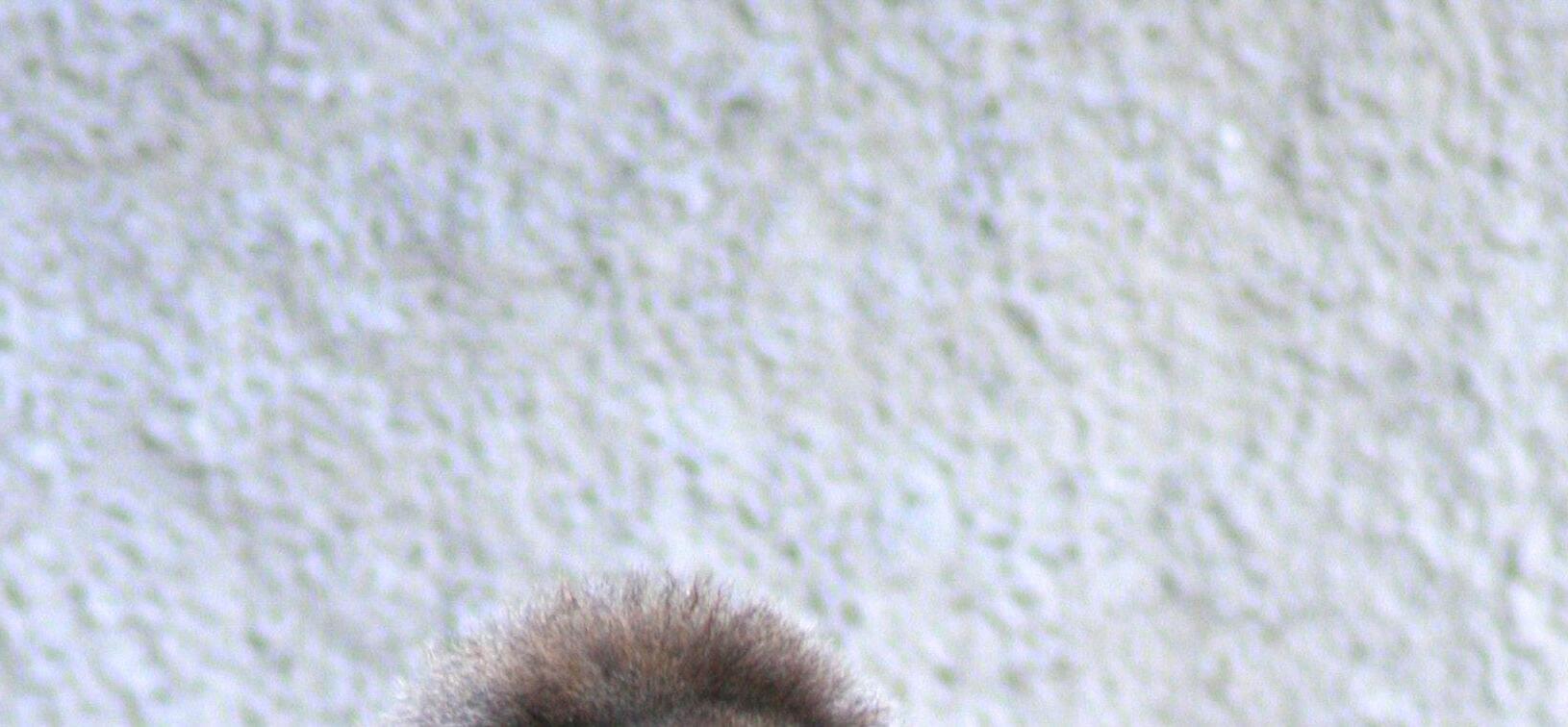
Katanga was a gorilla who was housed at Gladys Porter Zoo in Brownsville, TX, and died in 2015 at the estimated age of 52. She was captured from the wild in 1969 and was thought to be six years old at that time. She was first sent to Detroit Zoo in Michigan, then to Henry Doorly Zoo in Nebraska, and finally to Brownsville, all within the first year following her capture. During her time at Gladys Porter, she birthed 17 babies. Six of her children died at birth; two lived less than two weeks; three more died before the age of six (one having been killed by her father); one lived to seven; five lived until adulthood with her oldest child dying at 40. Two of her children were transferred to other zoos at age four and seven. Katanga spent 12 years of her life pregnant. While estimates suggest that Western Lowland gorillas would naturally give birth around every four years and experience an infant mortality rate of 40%, Katanga gave birth on average every 1.6 years over the 26 years from her first birth to her last, with an infant mortality rate of 53%. Katanga was the grandmother of Harambe, the male gorilla killed at Cincinnati Zoo one year after she died.
Like humans, other great apes form deep bonds with their children, some remaining in their natal troop for life, and others – often young adult males – dispersing from their group only after they reach maturity. To separate mother and child prematurely and for a mother to experience the loss of so many children over her lifetime causes undeniable suffering for parent and child alike.
Accounting for the adjustment for infant mortality, age at death increases but remains lower than the higher end of life expectancy (40 years old) in the wild. Current median age of the living population is 18.85. The average group size in North American zoos is 5.9.
The living population of 346 gorillas have been born to 157 females, with the average number of births per female at two, and the most births by an individual at seven (two individuals). The living population of 346 have been born to 91 males, with the average number of offspring per male at 3.5, and the most offspring from individual males at 12. Of the historic population the most offspring per individual female was 17, and the most offspring of an individual male was 20.
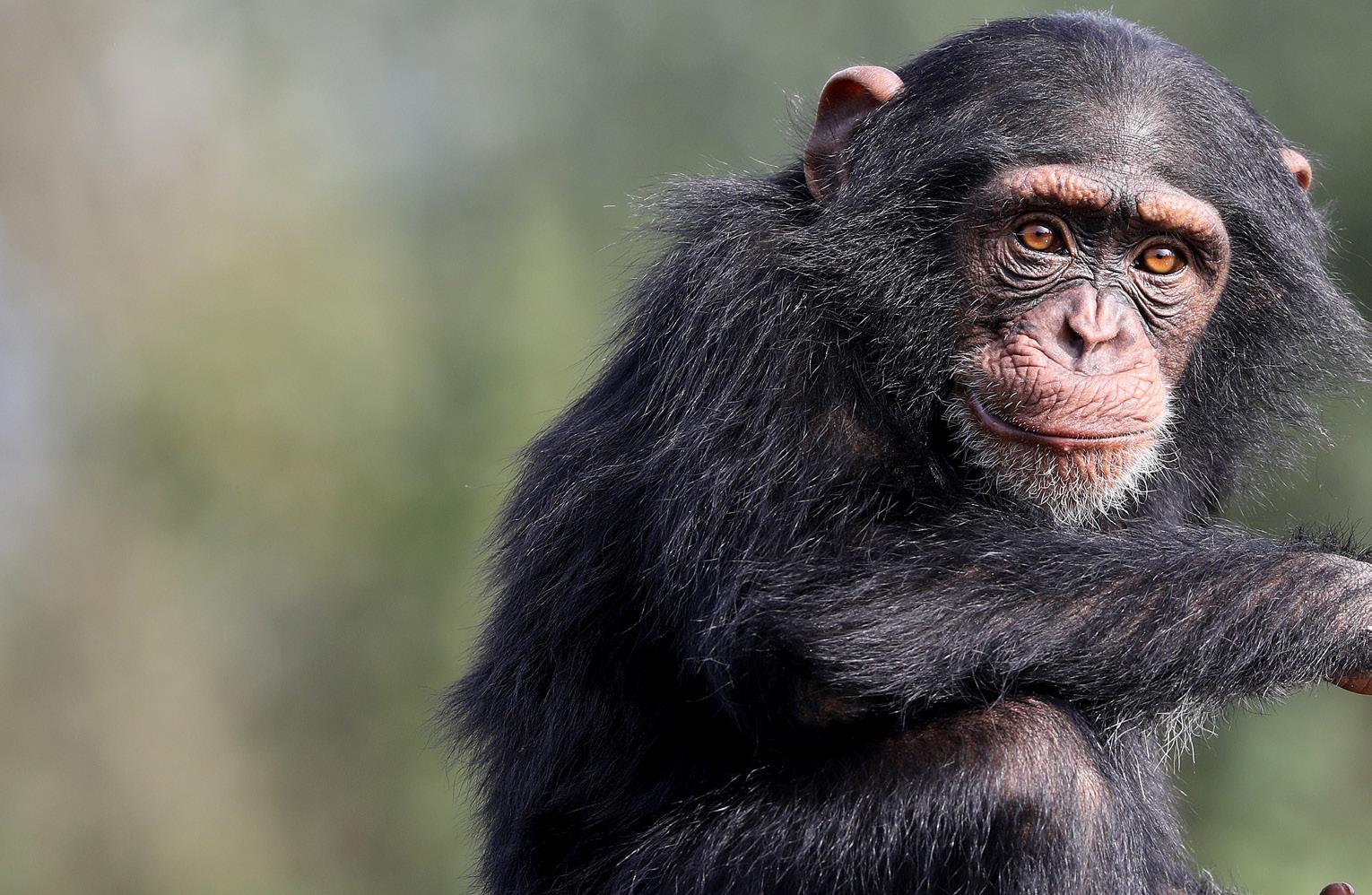
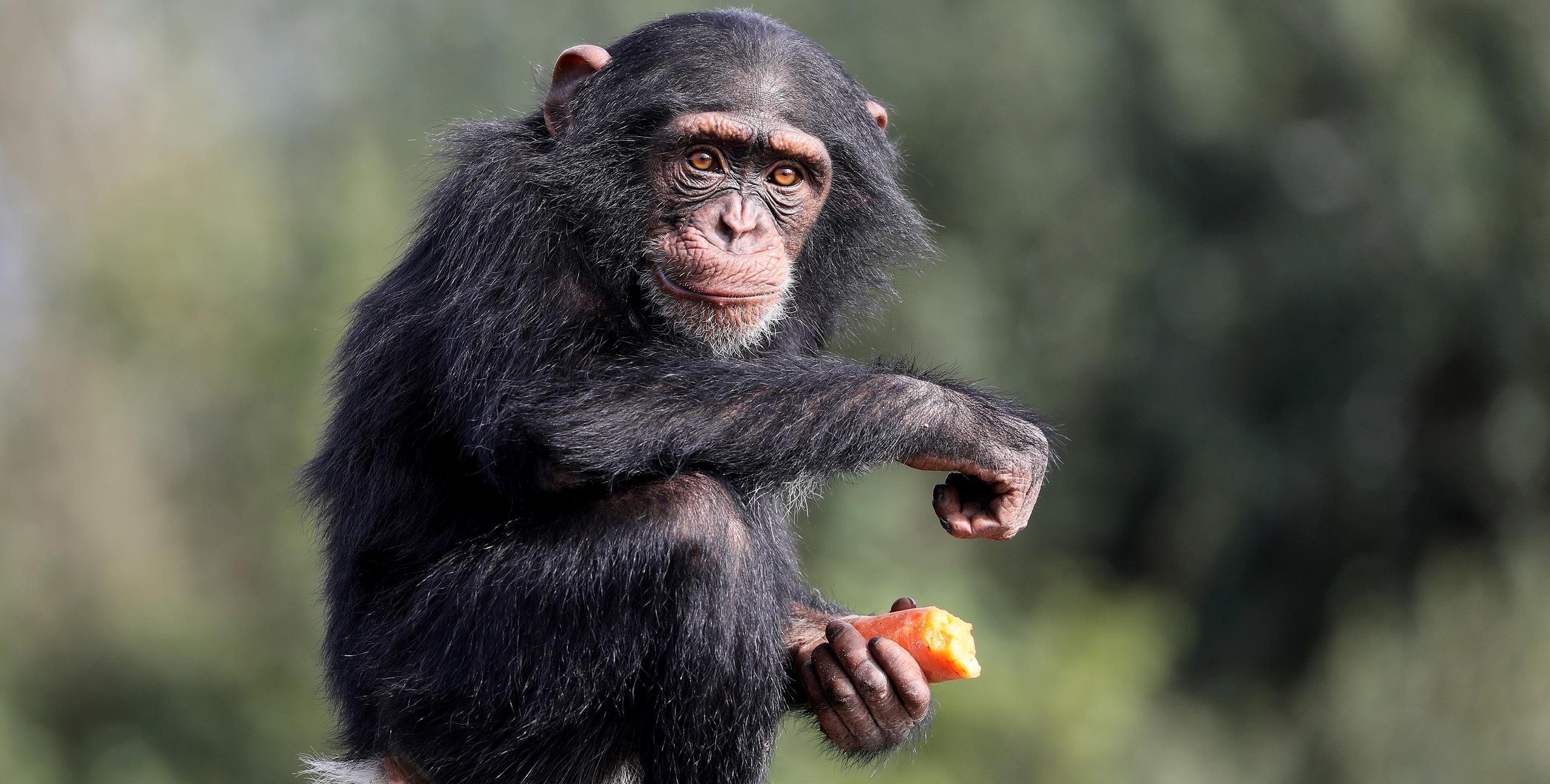
THE LIFE EXPECTANCY OF CHIMPANZEES IN ZOOS HAS INCREASED OVER TIME. HOWEVER, SIMILARLY TO GORILLAS, AGE AT DEATH STILL FALLS BELOW BEST ESTIMATES OF LIFE EXPECTANCY IN THE WILD.
The most recently available North American studbook cites the living zoo population of chimpanzees in 2012 at 263. Thirty-six percent of the population are male (n=94), and 64% female (n=169). Of those, 16% (n=41) were wild caught. Of the historic population, 21% (n=276) were wild caught. The average age of living individuals is 21.8, with the oldest individual aged 57.5 years and the youngest aged 6 months.
Of the historic population, the average age at death for those with known or estimated birth dates was 15.32 years old. Forty-four percent (n=242) of chimpanzees with a known or estimated birthdate died before they reached five years of age with 20% (n=107) dying within two weeks of birth. Fifty-five percent (n = 302) of chimpanzees died before the age of 10.
Age at death of chimpanzees with known or estimated birth dates between 1901 and 2012 are as follows:
The life expectancy of chimpanzees in zoos has increased over time. However, similarly to gorillas, age at death still falls below best estimates of life expectancy in the wild. A Yale University study16 cited average life expectancy of free-living chimpanzees in “favorable ecological circumstances” to average 32.8 years. Given that free-living chimpanzees are subject to external pressures such as environmental degradation, competition for food, and hunting, as well as an absence of veterinary care in the case of illness or injury, one might expect life expectancy in zoos to be higher in comparison.
Even with adjustments made for infant mortality before the age of one, chimpanzees in zoos do not outlive their free-living counterparts based on the aforementioned study. As with gorillas and other apes in captivity, widely cited figures for life expectancy for chimpanzees in zoos is 50-60 years. Only 10 individuals (0.8%) in the historic population of chimpanzees have lived beyond the age of 50 and only five (0.4%) beyond the age of 55. The oldest chimpanzee on record lived to be 65 years old. To date, only 18% of deceased chimpanzees lived for more than 30 years in zoos. Of the living population in 2012, only three individuals (1%) were older than 50 years.
Age at death of chimpanzees with known or estimated birth dates between 1900 and 2012, adjusted to exclude those who died in the first year of life, are as follows:
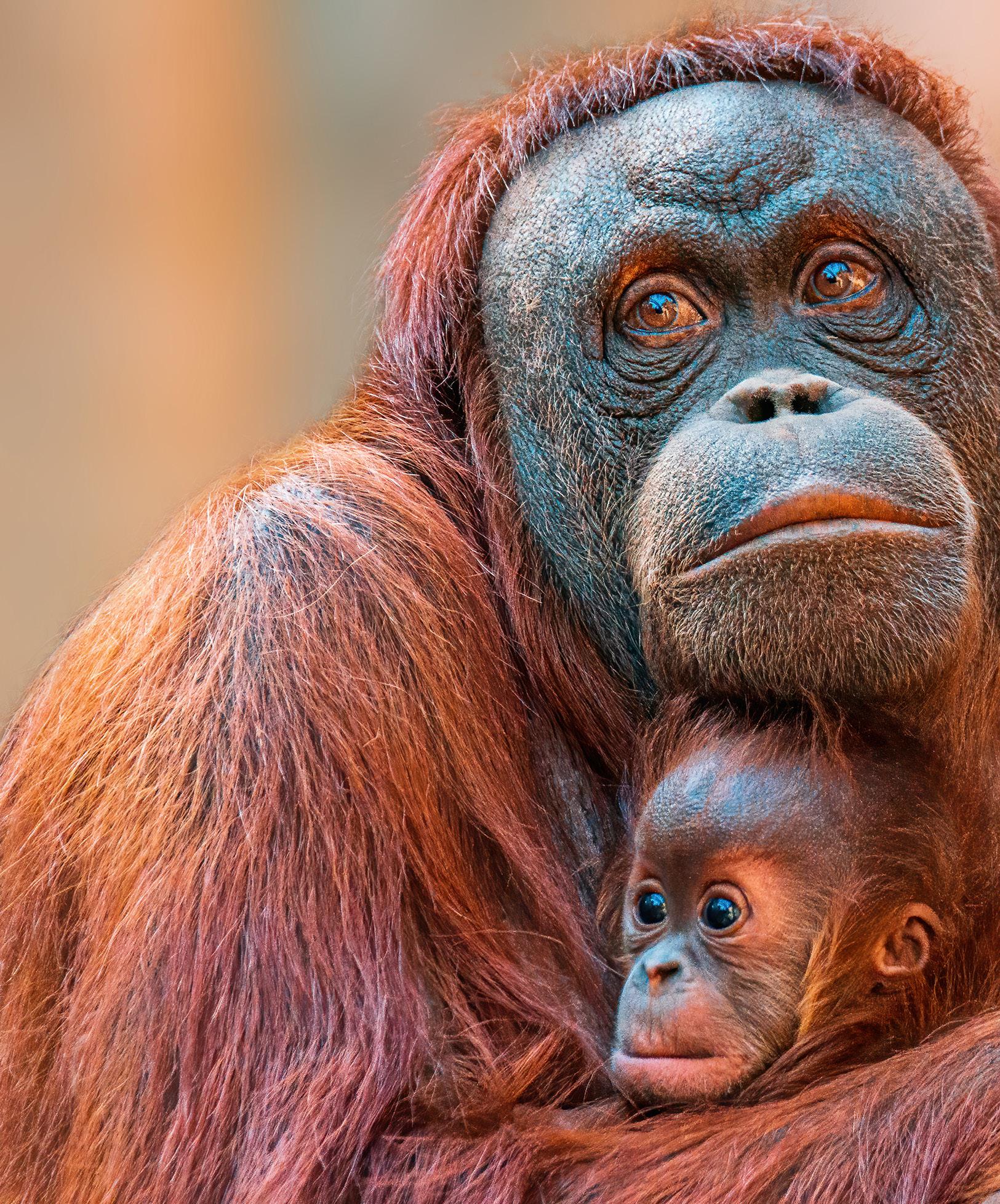
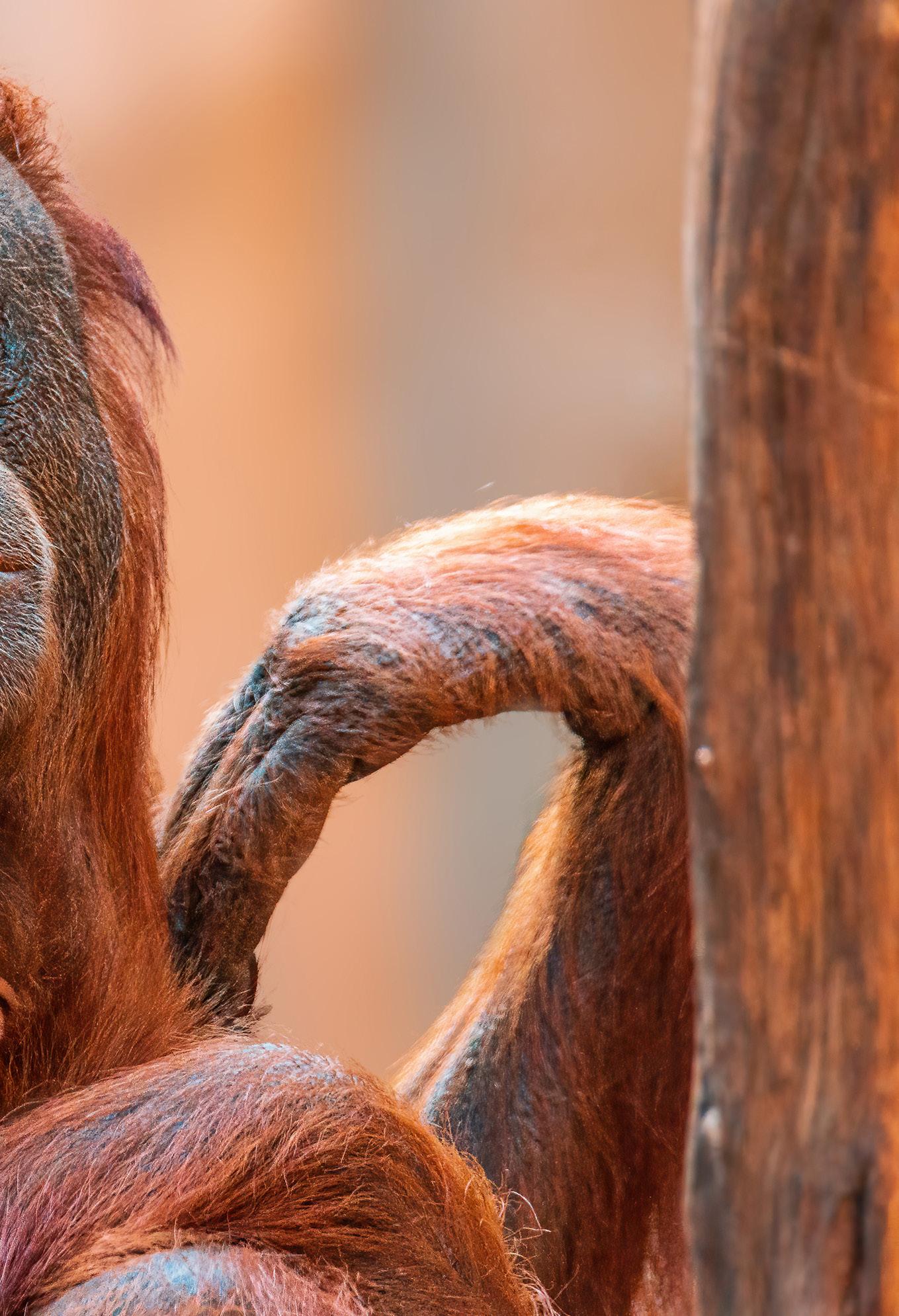
The most recently available North American region studbook data cites the living zoo population of orangutans in 2015 at 279. Forty-four percent of the population are male (n=122), and 56% female (n=157). Of those, 1% (n=3) were wild caught. Of the historic population, 27% (n=258) were wild-caught. The average age of living individuals is 24.27 (median = 27.53) with the oldest individual aged 49.87 years and the youngest aged four months.
SIMILARLY TO GORILLAS, AGE AT DEATH STILL FALLS BELOW BEST ESTIMATES OF LIFE EXPECTANCY IN THE WILD.
Of the historic population, the average age at death for those with known or estimated birth dates was 15.32 years old. Thirty-four percent (n=212) of orangutans with known or estimated birthdates died before they reached five years of age with 16% (n=101) dying within two weeks of birth. Forty-three percent (n = 268) of orangutans died before the age of 10.
Age at death of orangutans with known or estimated birth dates between 1919 and 2016 are as follows:
Age at death of orangutans with known or estimated birth dates between 1919 and 2016, adjusted to exclude those who died in the first year of life, are as follows:
Of the three species under examination, orangutans are the only species whose life expectancy in zoos has fallen over time. In the wild, orangutan lifespans average between 35-40 years but estimates suggest they can live into their 50s.17 As seen with other species, zoos overstate the lifespans of orangutans in captivity. For example, Denver Zoo claims that orangutans can live up to 35-40 years in the wild and “up to fifty years in captivity.”18 Only two orangutans at Denver Zoo have lived to be older than 40, with one dying six weeks after their fortieth birthday. The average age at death for orangutans at Denver Zoo is 30 years old.
Higher figures still are claimed by Zoo Atlanta, which cites captive lifespans for orangutans as “up to 50-60 years in zoological settings.”19 At Zoo Atlanta, the average age at death for orangutans held there is 21.2. Three orangutans at that zoo died before one year of age; four died in their twenties; and two lived into their forties (43 and 48).
In the historic population across all zoos in North America, only 12 orangutans have lived to be 50 years old or older, despite this being a regularly cited life expectancy by the industry. No orangutans have lived to be 60 years old according to studbook data.
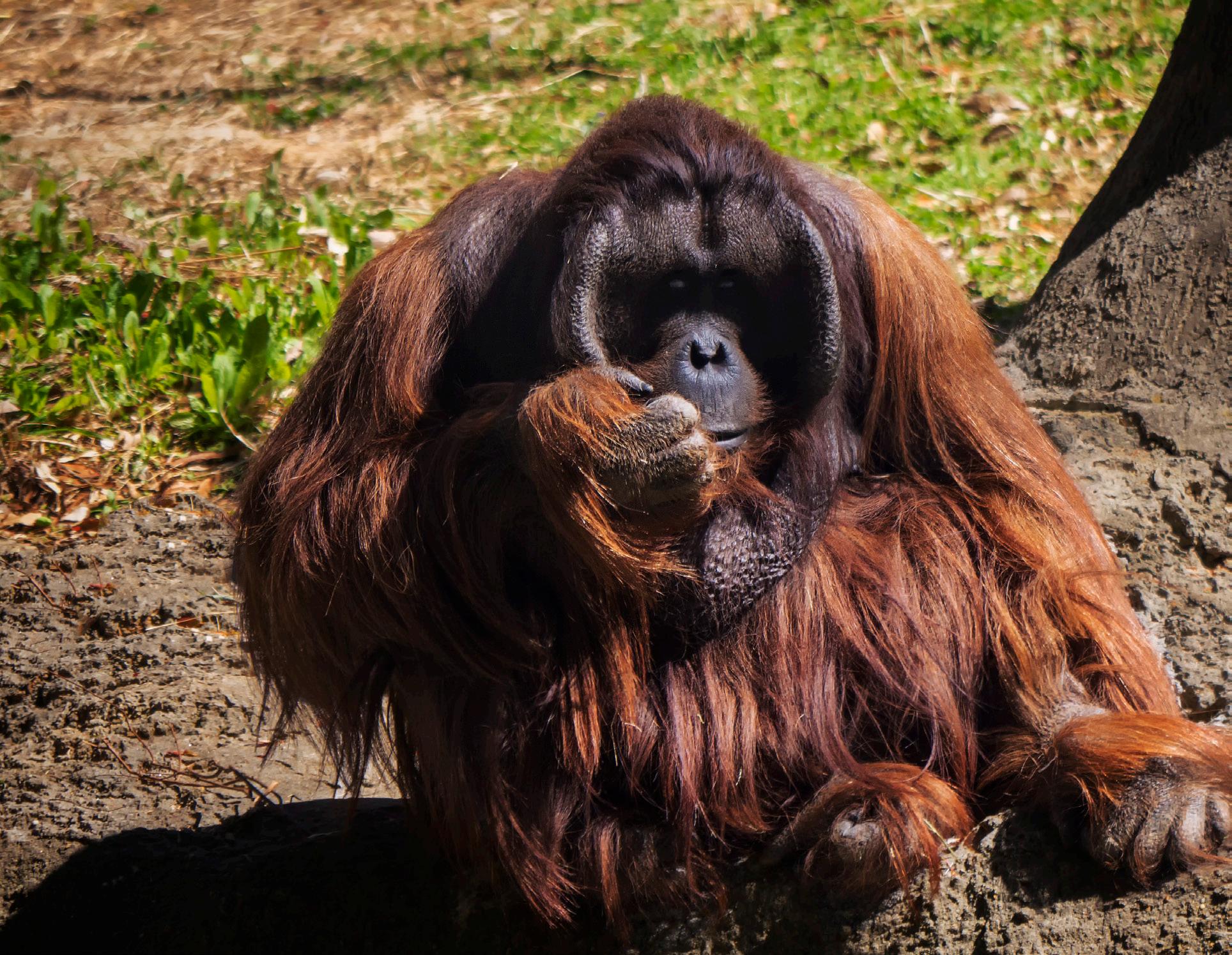
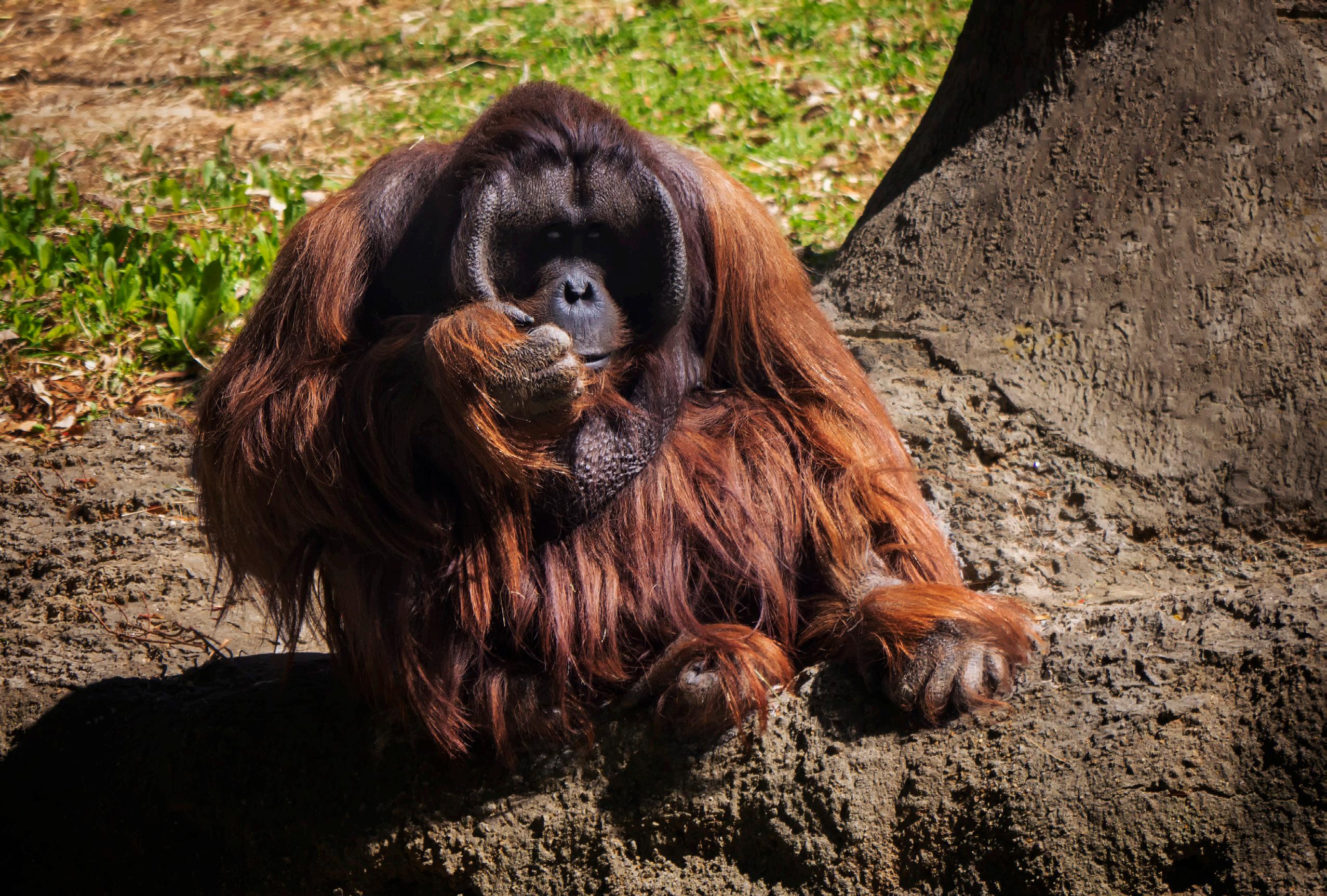

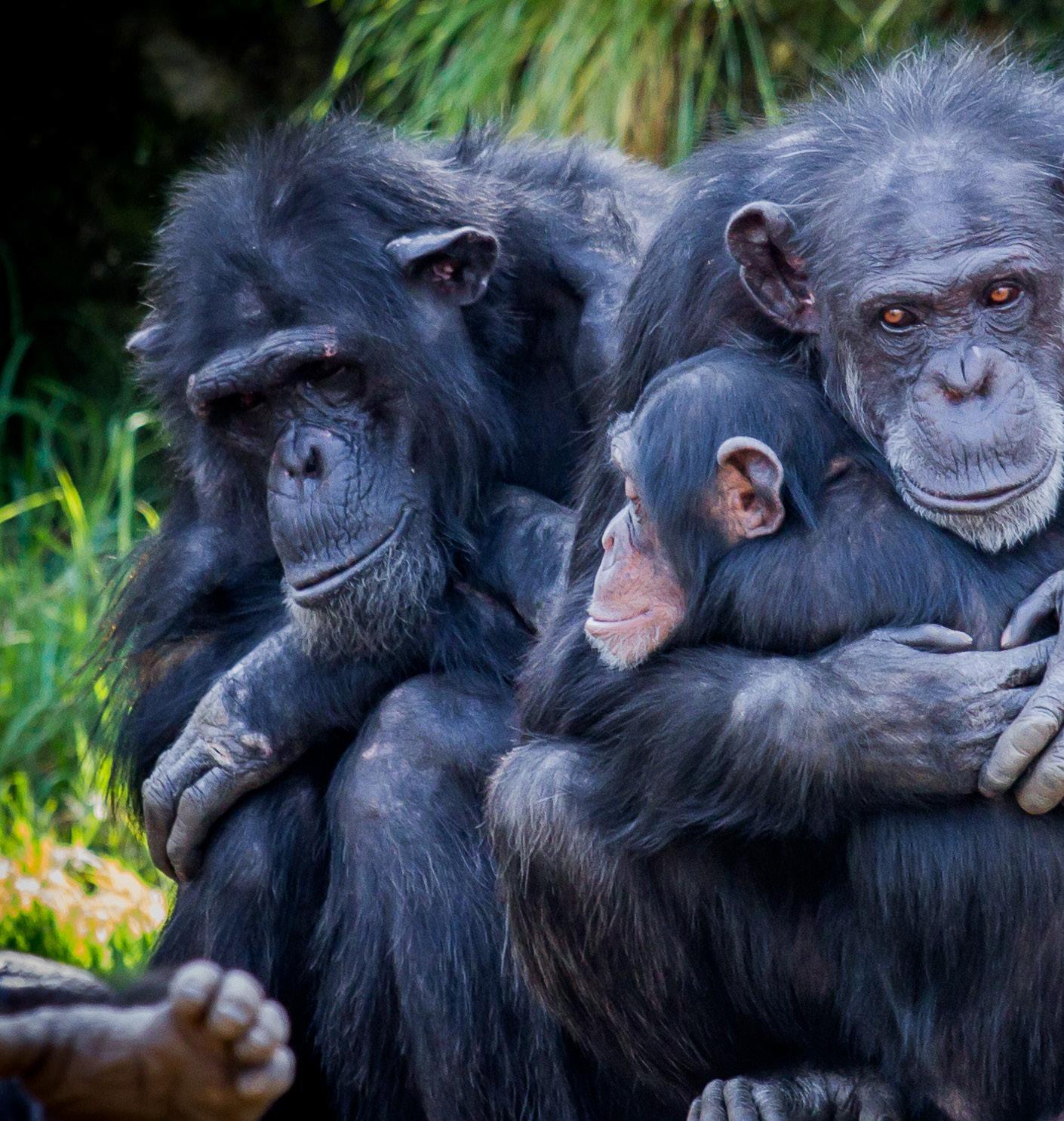
An international studbook for bonobos has been maintained at Antwerp Zoo, Belgium since 1974. In 1989, the zoo industry formed a global breeding program combining the regional programs of Europe and North America. This was in recognition of the “small” population sizes within both the Ex-Situ Programs (EEP) and Species Survival Programs (SSP). 20 This program resulted in individuals being transported between continents for several decades. The current global zoo population is believed to have descended from just 36 founder animals. 21 Due to their low representation in European and North American zoos, in comparison to other great ape species, references to the species throughout this report are fewer than the other species discussed in this report.
THE CURRENT GLOBAL ZOO POPULATION IS BELIEVED TO HAVE DESCENDED FROM JUST 36 FOUNDER ANIMALS. DUE TO THEIR LOW REPRESENTATION IN EUROPEAN AND NORTH AMERICAN ZOOS, IN COMPARISON TO OTHER GREAT APE SPECIES, REFERENCES TO THE SPECIES THROUGHOUT THIS REPORT ARE FEWER THAN THE OTHER SPECIES DISCUSSED IN THIS REPORT.
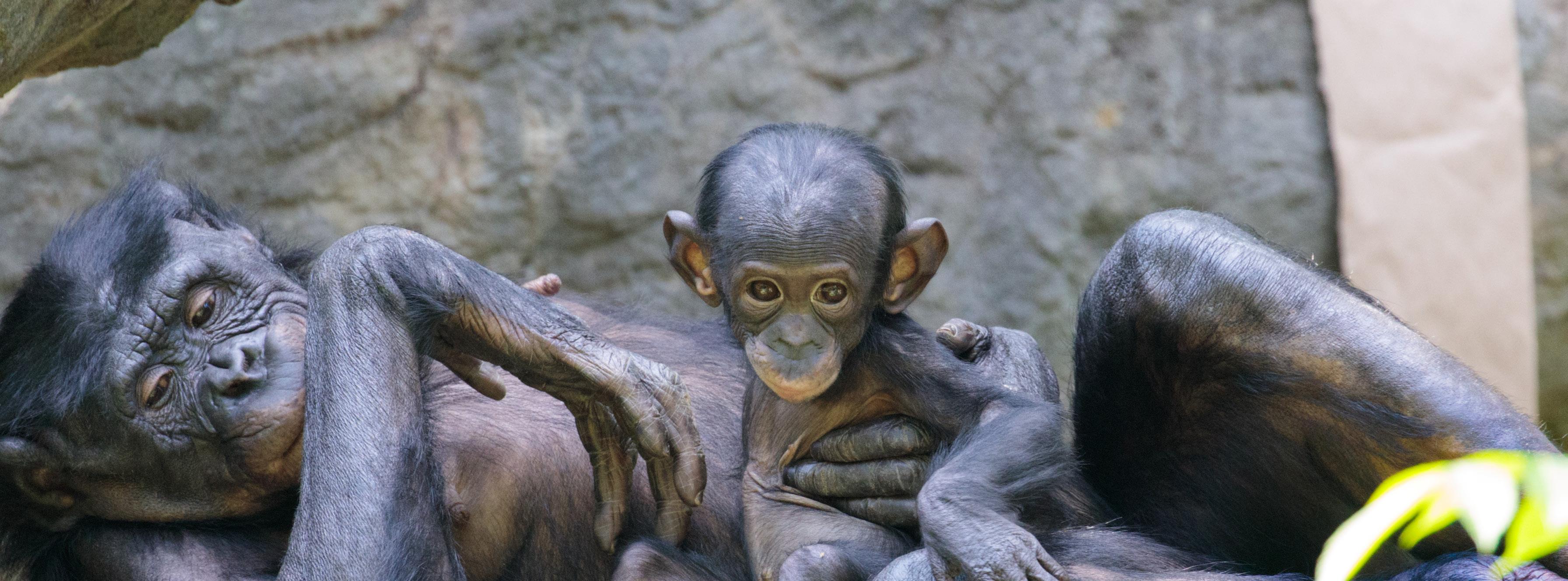
All great apes are considered to be highly intelligent. They are tool users; they have a concept of self; and there is evidence to suggest that they can plan ahead and thus conceptualize their future. These, among other attributes, present significant welfare challenges for great apes forced to live in captivity. In place of the complex, dynamic, and ever-challenging lives that great apes live in their natural environment, the limited, largely unchanging, and relatively tiny living conditions in which great apes are kept in zoos contribute to poor welfare.
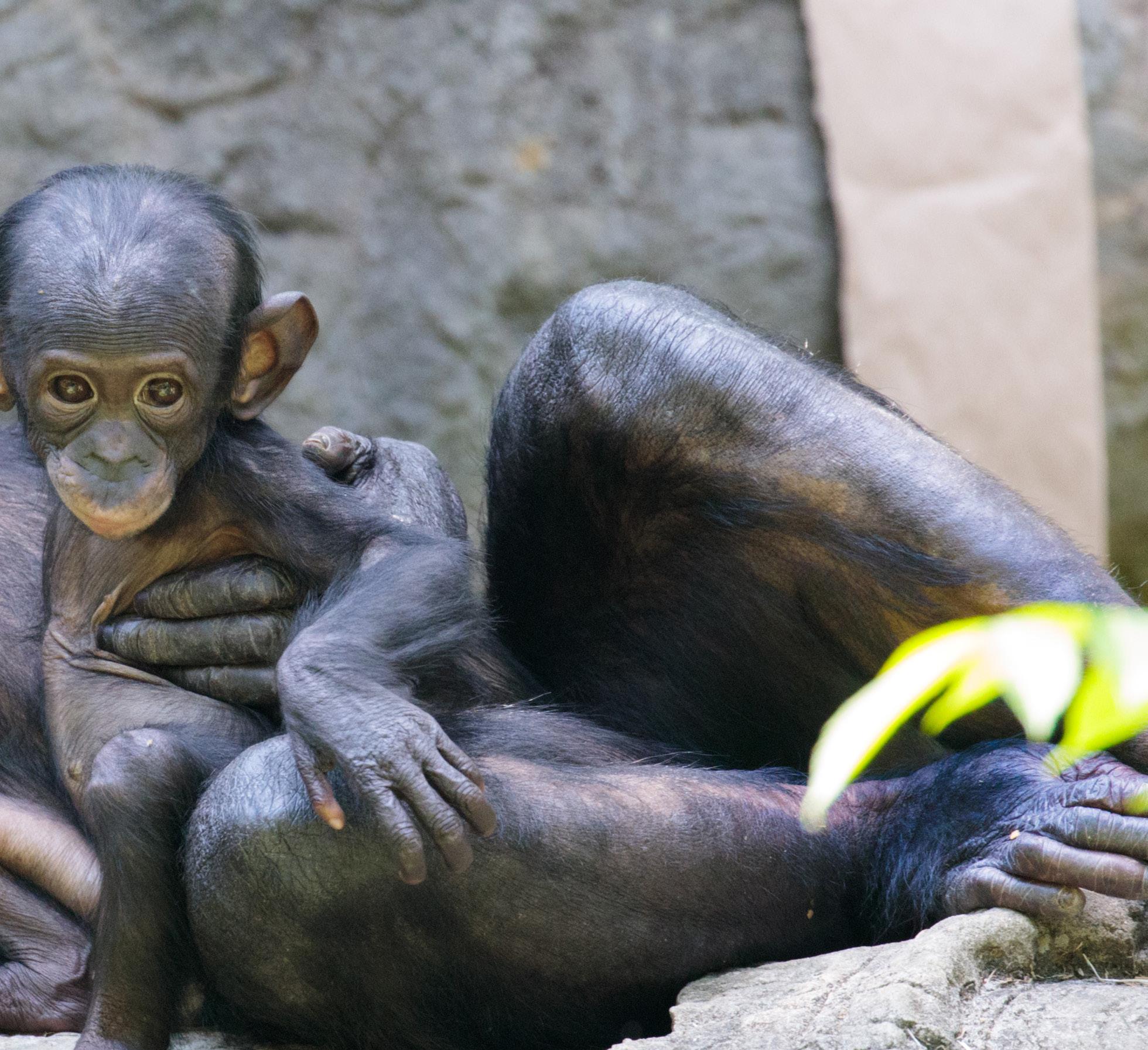
Zoos necessitate a lack of social opportunities, unnatural and often forced mating experiences (including invasive artificial insemination22); an inability to allow for maintenance of fission-fusion social groupings common to chimpanzees and bonobos; and an inability to escape conflicts, sometimes resulting in injury or death.
Orangutans, chimpanzees, and bonobos in their natural habitat form what are known as fission-fusion societies. This means that, while they form part of an overarching community, they split and merge into subgroups and move between them. The splitting and merging of groups are influenced by various factors including personal relationships and hierarchies, family ties, conflicts, resource availability, and habitat fragmentation. Inherent in a fission-fusion society is individual choice. This dynamic social structure simply cannot be replicated in captivity, despite claims by zoos that it can. For example, Maryland Zoo published a blog in 2022 entitled “Navigating Chimpanzee Society by Fission-Fusion.” 23 The article discusses the way in which the zoo manages its chimpanzees in two groups which change in composition of individuals each day. The zoo calls this “managed choice” and says its staff follow cues from the animals to decide who they should spend time with in any one period. To suggest that the daily organization of a captive group of chimpanzees into two groups dictated by zoo staff is an example of fission-fusion in practice is disingenuous and highlights the zoo industry’s inability to provide natural social opportunities to the great apes under their care. The zoo industry’s own guidelines acknowledge that the current keeping practices of orangutans in zoos do “not sufficiently reflect their social structure in the wild.” 24
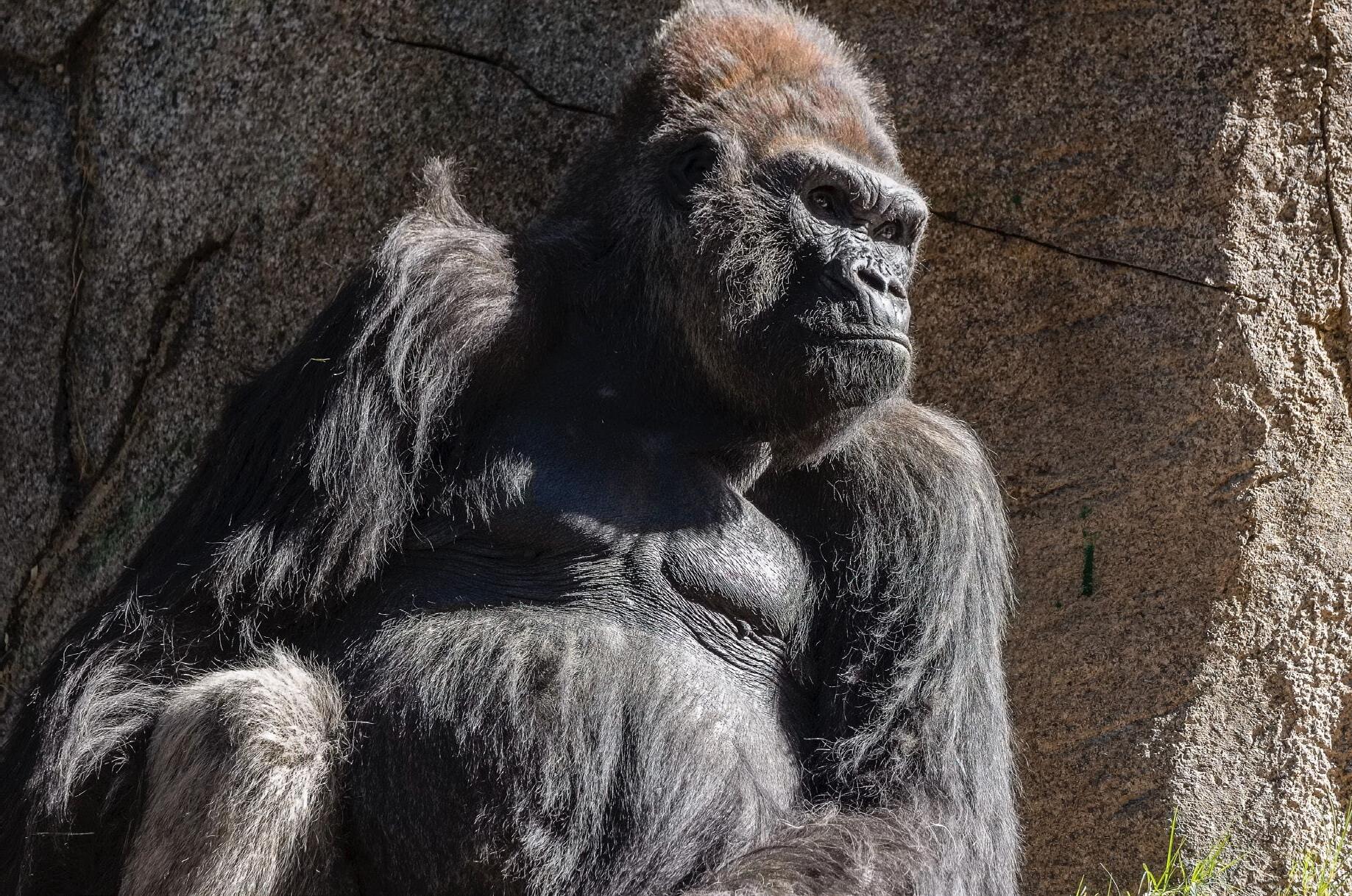
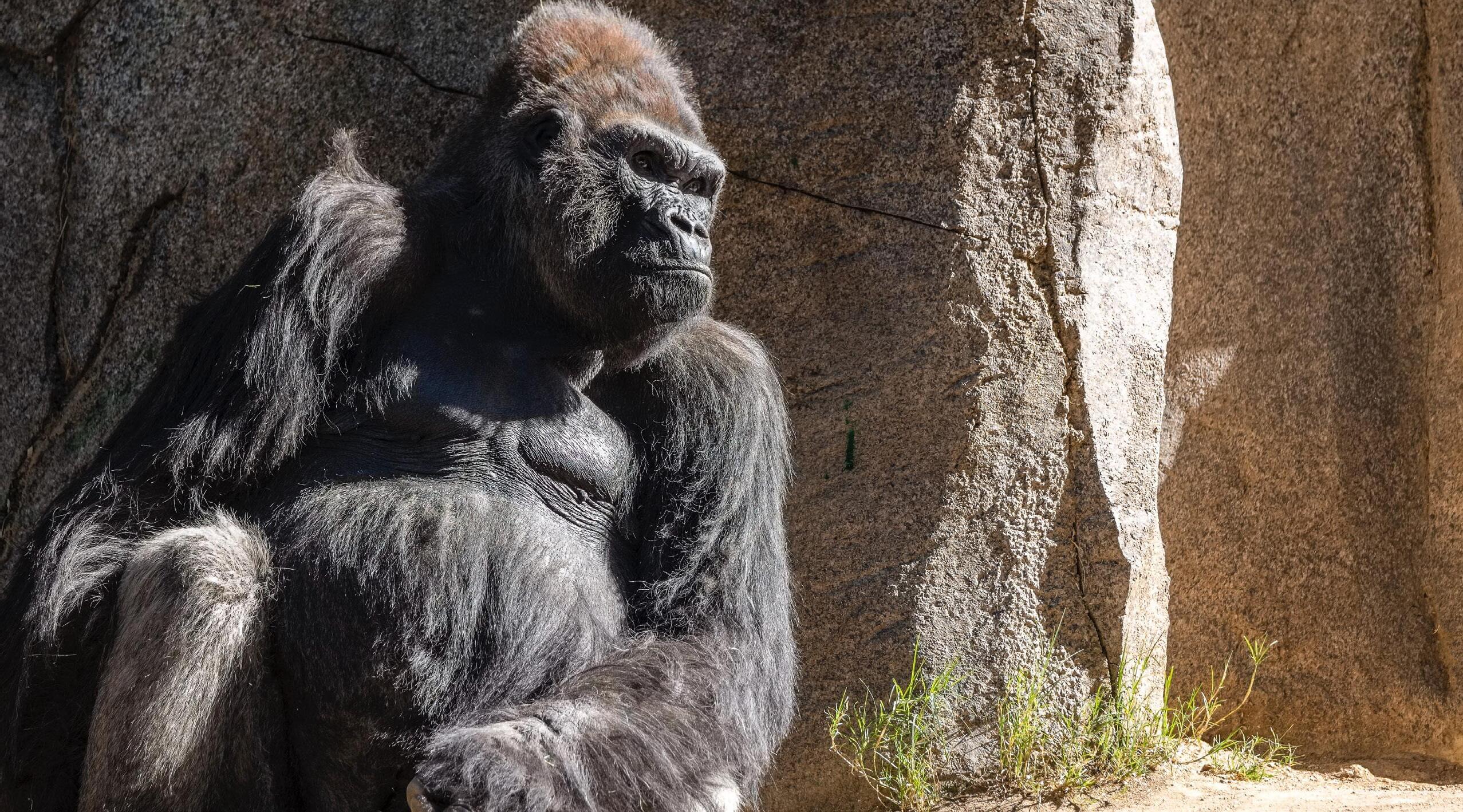
ADDITIONALLY, MOST ZOOS WILL ALREADY HAVE A MALE WITHIN THEIR COLLECTION, RESULTING IN MANY MALE GORILLAS BEING DEEMED “SURPLUS.”
Rather than replicate natural social structures, the grouping of great apes in zoos is often dictated by space limitations and the zoo’s breeding programs. In practice, the “one male” approach is still adopted by zoos with chimpanzees despite recognition that wild chimpanzee troops consist of multiple males and females. 25 Many facilities do not have the space to accommodate groups with equal numbers of both sexes.
Zoos and zoo breeding programs commonly place greater moral value on the species as whole resulting in captive management methods which can be detrimental to individual animals. 26 By their very design, zoos are limited in the number of species or individual animals they can keep. Also, each zoo differs in the species they keep. Therefore, this often results in zoos having too many animals they cannot keep or who are deemed genetically unimportant. Such individuals are often deemed “surplus” and face an uncertain future.
Current sex ratios in gorilla breeding programs are close to equal, however natural groups consist of multiple females to one or a few males. This creates significant issues when young males begin to mature and challenge their father, due to the potential risk of inbreeding if they were to become the dominant male. The issue is exacerbated by the confines of zoo life as they are unable to disperse and find another group of females like they would in the wild. Additionally, most zoos will already have a male within their collection, resulting in many male gorillas being deemed “surplus.” An alternative approach is to castrate male gorillas. In 2021, leaked documents reportedly revealed that The European Association of Zoos and Aquariums (EAZA) was considering adopting a strategy of culling healthy male gorillas due to overcrowding. 27 The gorilla action plan, released to stakeholders in zoos, reportedly stated that culling would be “the most appropriate tool if strictly talking from the biological point of view,” but that the decision could be unpopular with the public.
EAZA denied any such plans, however they did later publish a position statement on culling in 2023 which recognizes culling as an “appropriate management tool.”28
Castration is currently recommended for gorillas considered by the zoo industry to be “genetically surplus.”29 Castrated males do not develop secondary sexual characteristics. Current EAZA Best Practice Guidelines state the desire to control sex ratio of gorillas in zoos through “artificial insemination with sex-sorted sperm and selective abortion of fetuses.”
The EAZA orangutan EEP acknowledges within its Best Practice Guidelines that European zoos have a “male surplus problem.”30 This issue is also reflected in North American zoos, where sex ratios are close to 50:50. Whilst bachelor groups have been successfully established for gorillas and chimpanzees, attempts have been less successful for orangutans due to the aggressive behavior of sub adult and adolescent males.
For chimpanzees, it is reported within European zoo guidelines that the EEP has to deal with large numbers of males who are deemed “surplus.” There are several reasons provided including, limited space; chimpanzees in some facilities only birthing males; non-breeding males becoming dominant over a male selected for breeding; and adolescent males becoming problematic at an earlier stage due to the lack of naturally large group dynamics where mature individuals would assert authority and keep youngsters in check.31
In species which have complex social structures, like great apes, “individuals are repositories of social and practical knowledge for their groups and they provide social and behavioral stability.”32 To consider any individual as surplus is ethically indefensible, highlights the unsuitability of keeping these species captive, and is contrary to one of the main pillars that zoos claim to stand by – animal welfare.
Poor welfare leads to mental distress of these complex animals, which can manifest in abnormal (stereotypical) behavior such as self-mutilation, food-based stereotypies (such as regurgitation and reingestion), pacing, rocking, digit sucking, self-grasping, and extreme aggression or submission, as examples. Some of these behaviors are described as “natural” by zoos since they are commonly observed in a zoo environment,33 but this is misleading as these behaviors are uncommon – or undocumented – in the wild. Research suggests that “a substantial number of great apes in captivity show behavioral abnormalities and measurable signs of distress.”34 In the most extreme cases, pharmacological treatments are used to ameliorate captivity-related mental illness, with increasing use of anti-depressants within the zoo industry. In the late 1990s, the Head Veterinarian of Franklin Park Zoo in Boston, MA, Dr. Hayley Murphy, and Psychiatrist, Matthew Mufson, surveyed zoos with gorillas to better understand their use of psychopharmaceuticals. Half of the 31 zoos that responded to the query confirmed that they had employed psychopharmaceuticals for their gorillas.35

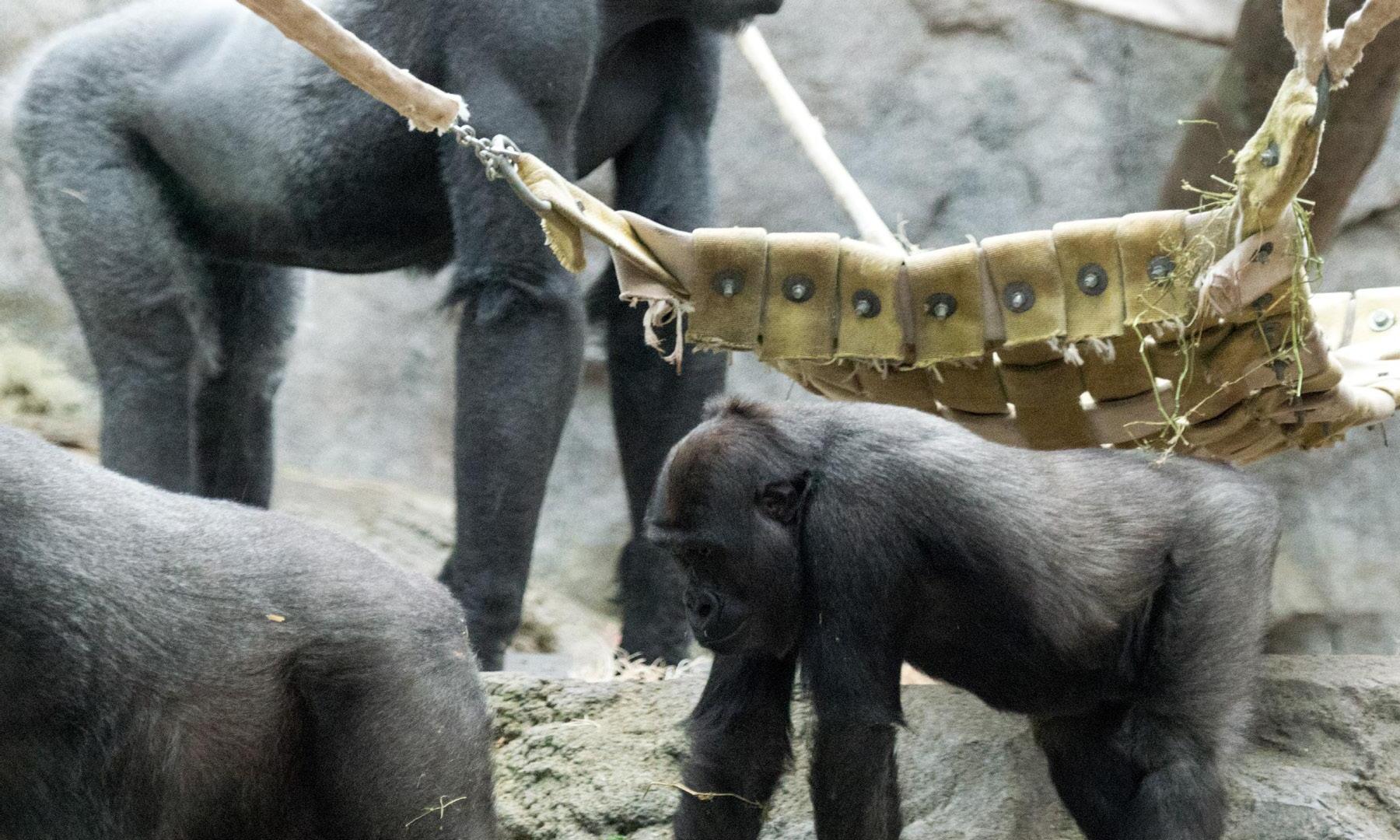
Kitombe (Kit) was a gorilla who arrived at Franklin Park Zoo in 1998 at the age of 12. He quickly impregnated one of the females, Kiki. Kit’s behavior became increasingly violent with a particular focus on a female gorilla called Gigi. He attacked her multiple times, causing her serious injury.
In an attempt to curb Kit’s aggression, zoo staff experimented with various antidepressants and anti-psychotic drugs. When one did not work, he was weaned off and put on another. In total, he was put on four different drugs, none of which had a significant impact.
In the meantime, his attacks on Gigi continued with news reports stating that she became “a nervous wreck.” 36 She was given a combination of drugs to calm her, but it was not until Kit was permanently removed from the group that she began to improve. Kit was put in solitary confinement, where he stayed for ten lonely years.
When Kitombe passed away at the zoo in 2024, news reports made no reference to his sad and violent past, instead calling him a gentle father and mate.
In their natural environment, Western Lowland gorillas have home ranges of between 2.7 – 5.4 square miles.37 Chimpanzees have large variance on home range across countries and communities, with the smallest recorded range 1.1 sq miles in Ivory Coast to 24 square miles in Senegal.38 Orangutans have varying home ranges. Females are documented as having home ranges between 864 – 1,484 acres (1.35 – 2.32 square miles) in Borneo and around 2,099 acres (3.28 square miles) in Sumatra. Male home ranges are larger than females’ but are less studied so there is little data to confirm sizes. One study examining orangutan ranges in a particular Sumatran swamp forest found that males had homes ranges of up to 6,167 acres (9.65 square miles).39 Zoo enclosures are magnitudes smaller than natural home ranges for great apes. This has detrimental consequences for the health of great apes confined within. Zoo industry guidelines recognize that it is “difficult to encourage gorillas to exercise in a confined area such as a zoo enclosure” which can result in individuals becoming obese.40 Even those built in recent years, or still under construction at the time of writing, fail to meet the special requirements of these complex animals. For example, San Antonio Zoo in Texas has promoted the construction of “Congo Falls,” a new gorilla exhibit, due to open in 2025. Described as a two-acre exhibit (0.003 square miles), it is 900 times smaller than the smallest home range of free-living gorillas. The new enclosure is due to house eight gorillas split into two groups. It is unclear if the full area will be useable space for the apes, or if it also includes the visitor space.41
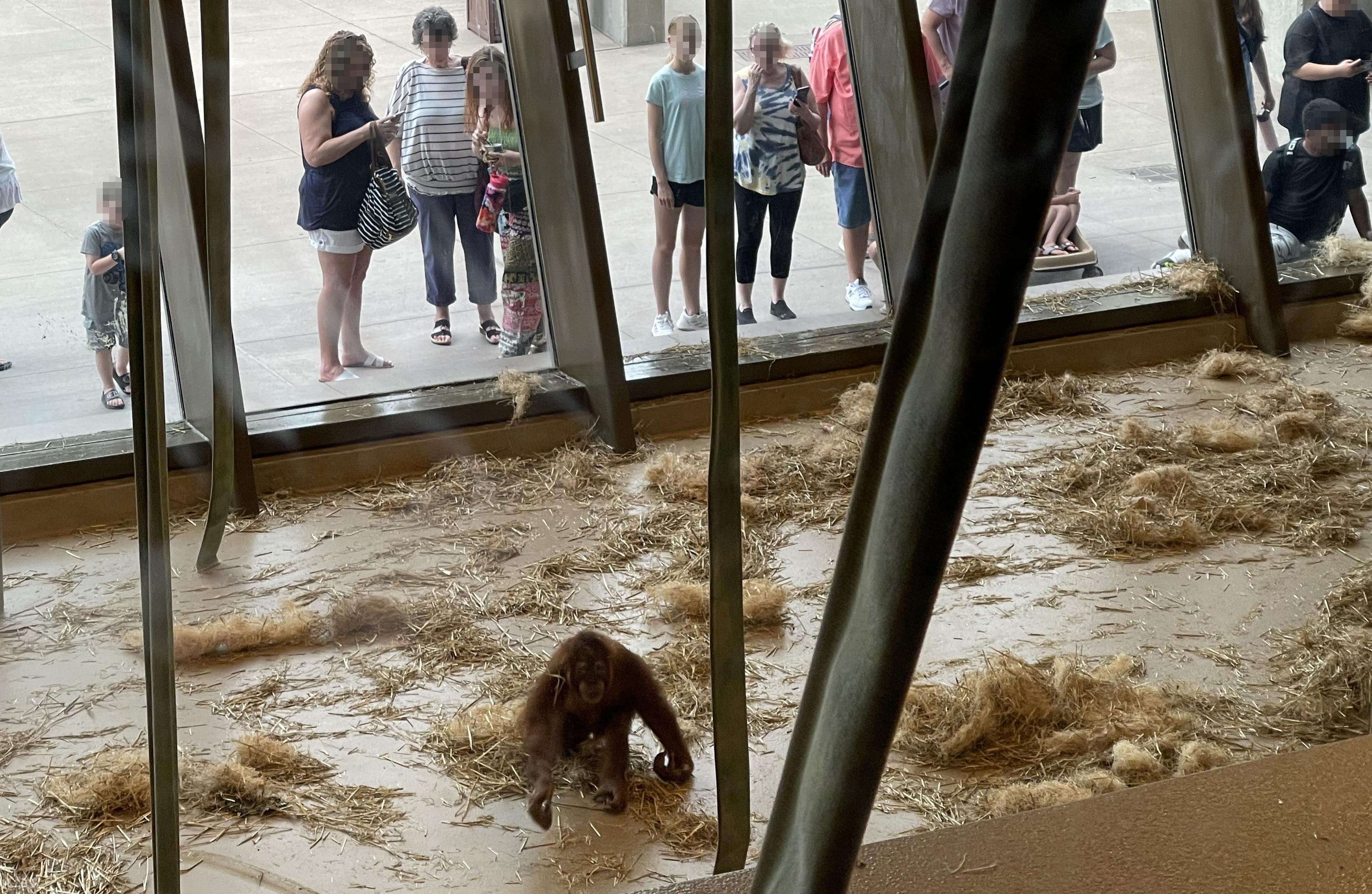
A chimpanzee exhibit that opened at the Indianapolis Zoo in 2023 has a footprint of just 0.22 acres (0.00034 sq miles). This is 3,666 times smaller than the smallest natural chimpanzee range and 80,000 times smaller than the largest reported natural home range. The exhibit, which is home to 21 chimps, cost $25 million USD to build.
Henry Doorly Zoo in Omaha, NE, opened its new orangutan exhibit in 2024. Four orangutans live in the 0.05 acres (0.000082 sq miles) space which was described as “innovative and forward-thinking.”42 The enclosure is 16,463 times smaller than the smallest recorded orangutan home range. The enclosure cost $21 million USD to build.43
A 2016 citizen survey44 found median enclosure size for gorillas in 28 zoos in the United States to be 0.4 acres (0.00065 square miles). The smallest was just 0.056 acres (0.000089 square miles and the largest was 1.28 acres (0.002 square miles). The same survey found that the median chimpanzee enclosure in the same zoos was 0.26 acres (0.0004 square miles). The smallest enclosure was 0.04 acres (0.000061 square miles) and the largest was 2.6 acres (0.0041 square miles). Orangutans in zoos had a median living space of 0.14 acres (0.00022 square miles). The smallest orangutan enclosure was 0.064 acres (0.0001 square miles) and the largest was 1.2 acres (0.0019 square miles). It is unclear whether or not the survey took into account only space usable by the animals, or if it also included visitor infrastructure. As such, these figures should be considered the maximum space animals have access to.
In addition to size limitations, great ape housing in zoos is often designed with the zoo’s convenience as paramount. For example, in a 2021 study of AZA zoos, 29 of the 42 surveyed zoos (69%) were found to exclusively house their apes on hardscape floors such as concrete.45 This is likely because concrete is easier to clean than more complex, natural substrates.
Gorilla conservationists have expressed frustration over the extortionate amounts of money invested by zoos in holding great apes captive. In 2007, when London Zoo invested £5.3 million GBP on a new gorilla exhibit, gorilla expert, United Nations’ chief consultant on great apes, and Born Free consultant, Ian Redmond said: “£5m for three gorillas [seems a huge amount] when national parks are seeing [three gorillas] killed every day for want of some Land Rovers, trained [people] and anti-poaching patrols. It must be very frustrating for the warden of a national park to see.”46
Enclosure size and construction has a direct impact on ape welfare in zoos. Negative impacts include the inability to demonstrate natural behaviors, being forced into close proximity with conspecifics which creates social tension, increases chances of conflict and resulting injuries, exacerbates potential for disease spread between individuals, and prevents adequate physical movement resulting in obesity and other issues. All of these factors negatively impact mental and physical health and welfare of animals. No zoo enclosure would be large enough to meet the complex needs of great apes.
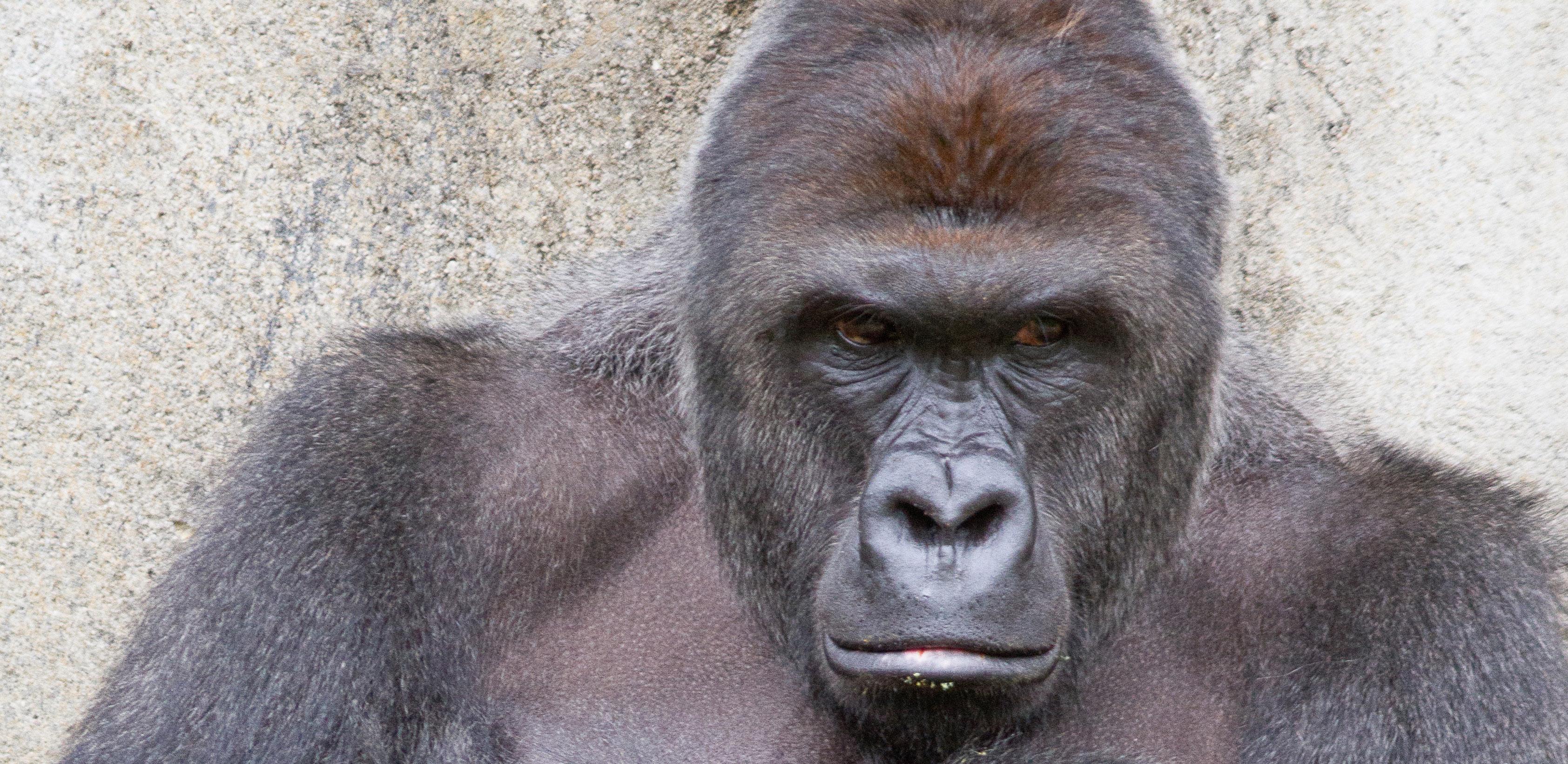
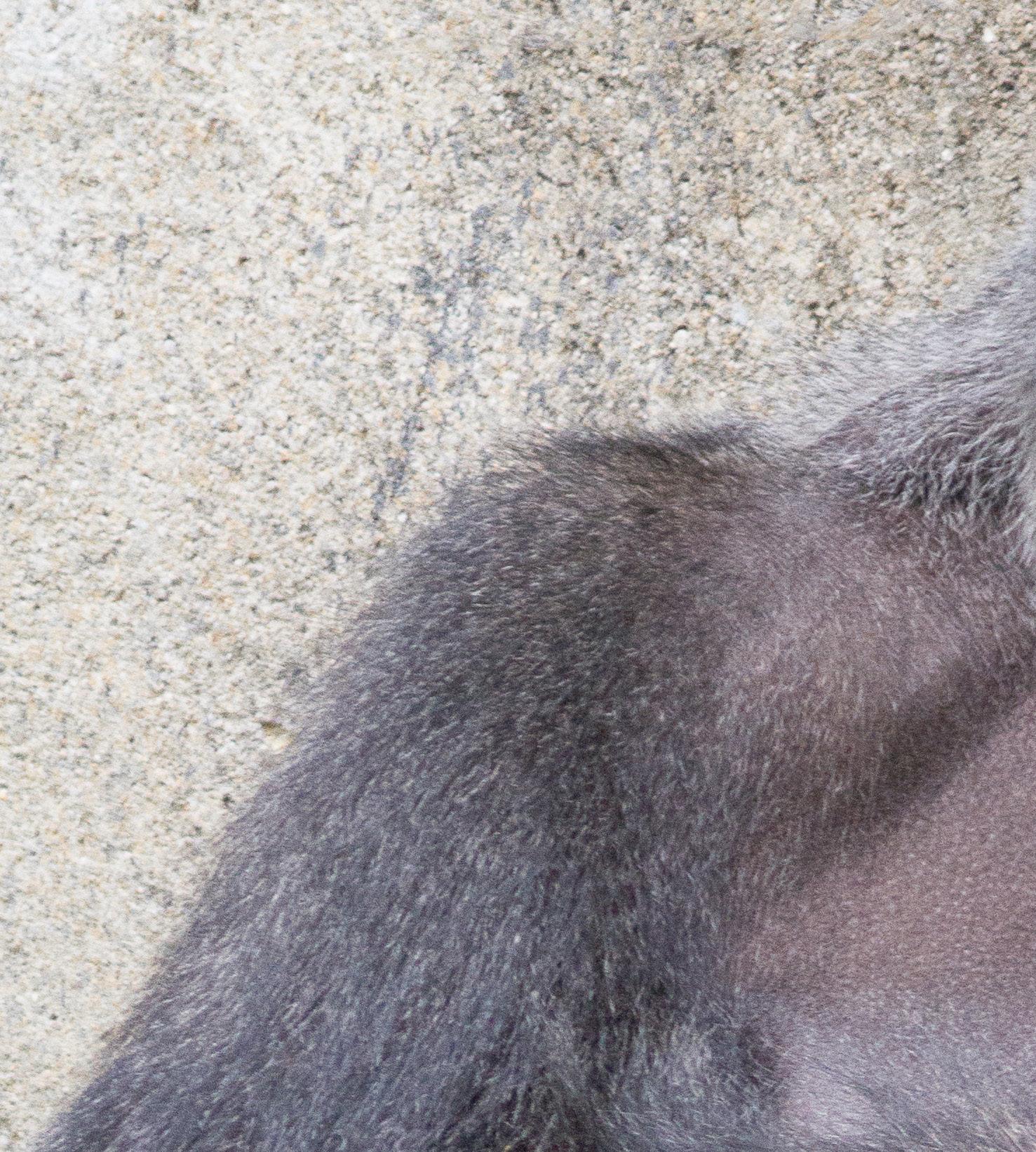
Perhaps the most famous great ape death in captivity is that of Harambe, a male gorilla shot dead at Cincinnati Zoo in 2016. A three-year-old boy fell into Harambe’s enclosure after crawling under fencing. Zoo staff were able to call two of the three gorillas in the exhibit into an indoor space, but Harambe would not move inside. Instead, he dragged the little boy around the enclosure’s moat, guarded him, and moved, pulled, and pushed him around. The terrified, screaming crowd of onlookers appeared to exacerbate Harambe’s behavior. Ultimately, fearing that a tranquiller dart would take too long to take effect, zoo staff shot Harambe in the head, killing him. The little boy was rescued from the enclosure; he suffered serious, but non-life-threatening injuries.47 Reports stated that the boy was able to crawl under the inadequate zoo fencing, then fell into the moat of the gorilla’s enclosure.48
Harambe's tragic death was not the first suffered by his family. When he was two years old, his mother Kayla and three of his siblings died from chlorine poisoning after chlorine tablets were left near a heater. The gas fumes poisoned the gorillas, causing their deaths.
Harambe’s death sparked a global conversation, with many people outraged that the endangered gorilla was killed following the zoo’s failure to provide a safe environment for visitors. The family of the little boy were also reported to have “gone into hiding” due to backlash and accusations of child endangerment. Ultimately, Harambe’s tragic death sparks questions over whether or not gorillas should be in captivity at all.

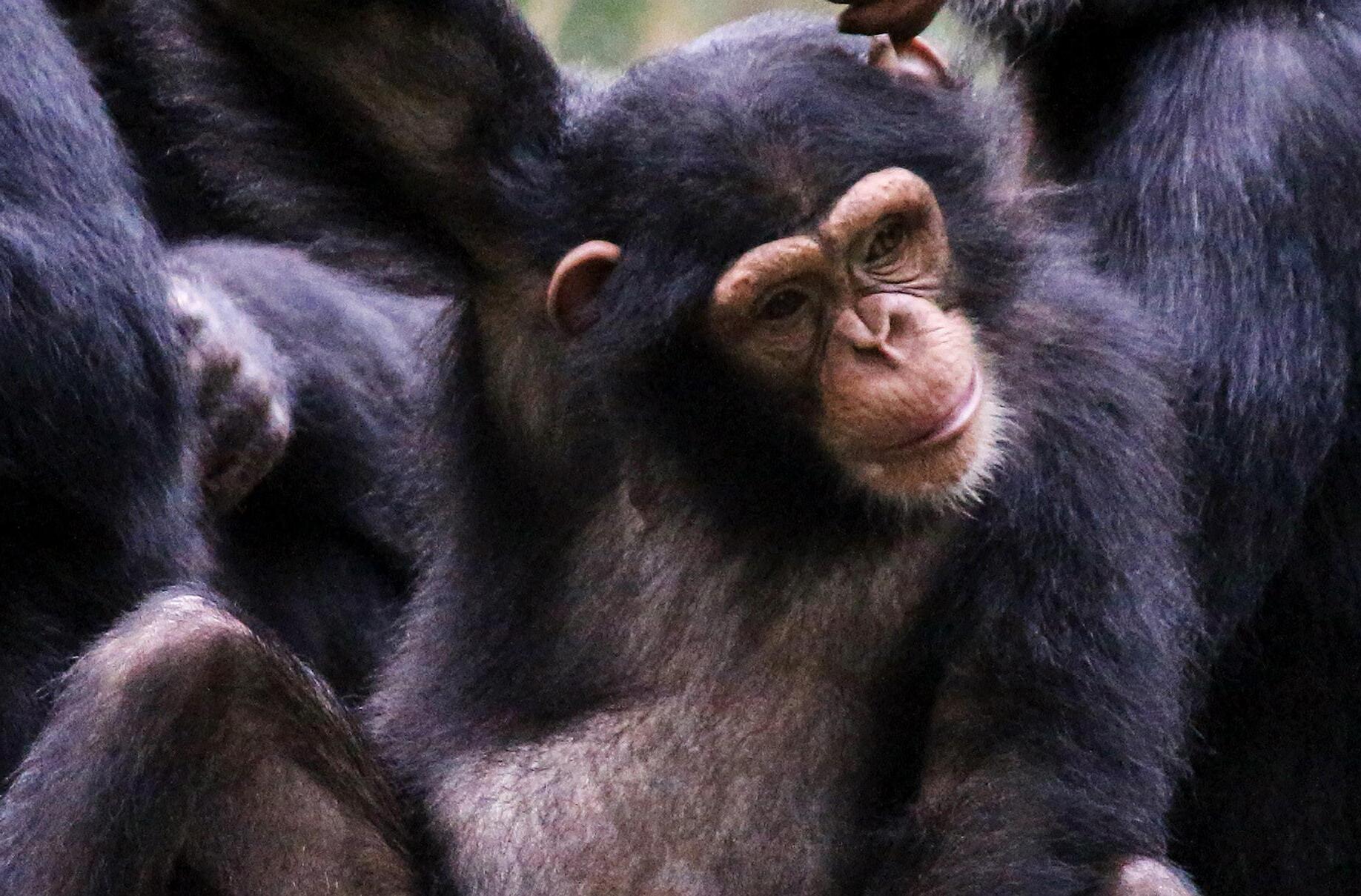
In December 2022, four chimpanzees were killed at Furuvik Zoo, Sweden, after escaping their enclosure through a door that was accidentally left open, following a combination of poor routines and human error.49 Female chimp Linda, 42, born in the wild in Liberia, and her threeyear-old adopted son she was carrying, Torsten, were shot and killed in the park’s snow covered fairground.50 Male chimp Santino, 44, and female Manda, 19, were shot inside the chimpanzee house. Santino was reportedly killed quickly but Manda was mortally wounded. Both chimpanzees were climbing in and out of the building through the window and it could not be guaranteed that they would stay inside the enclosure. Selma, 14, was shot and severely injured outside the chimpanzee house, suffering blindness in one eye, embedded shrapnel in her body, and a fractured arm.51 The other two surviving chimpanzees were Torsten’s biological parents, Maria Magdalena, 22, and Tjobbe, 19, who remained inside the building.
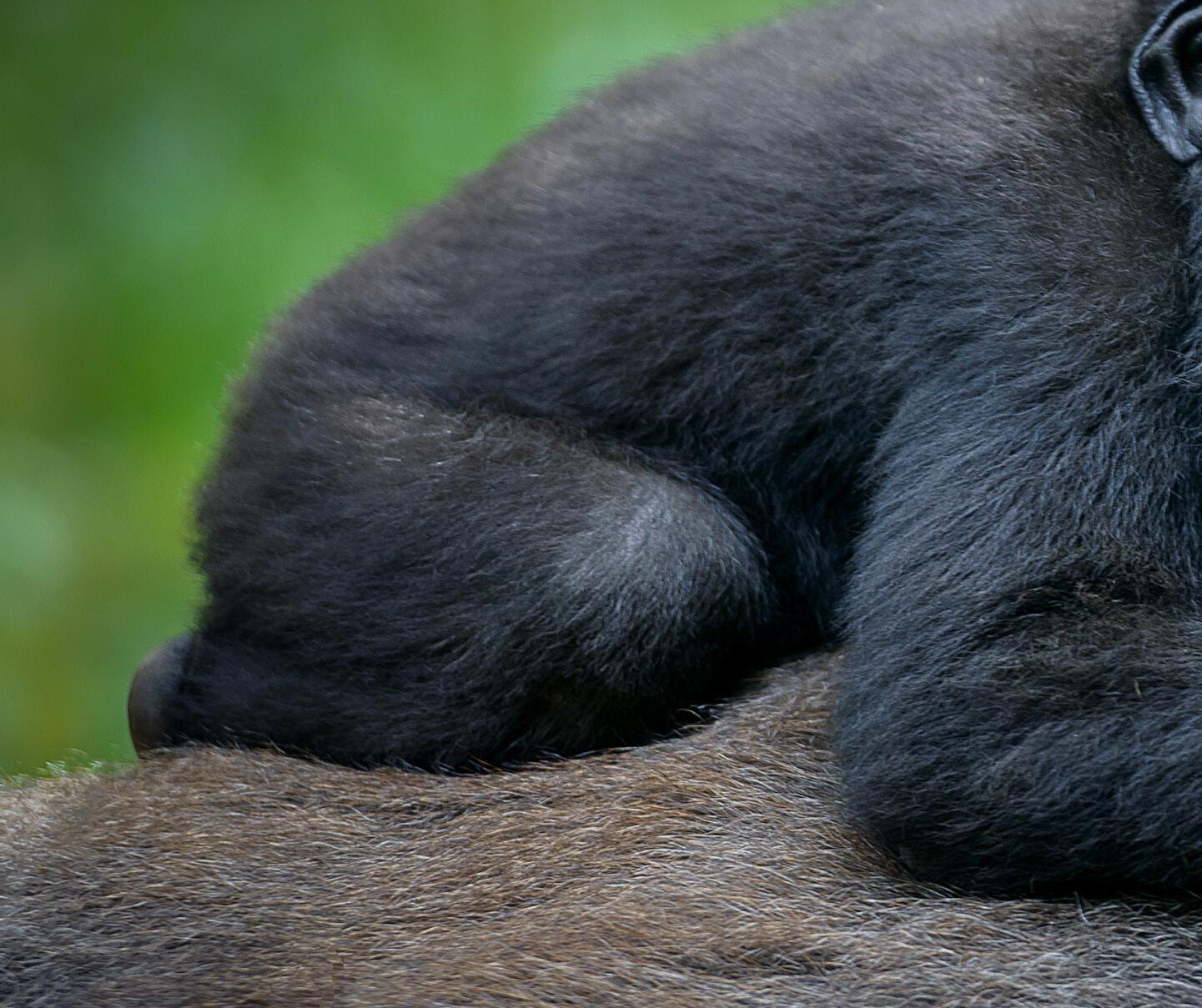
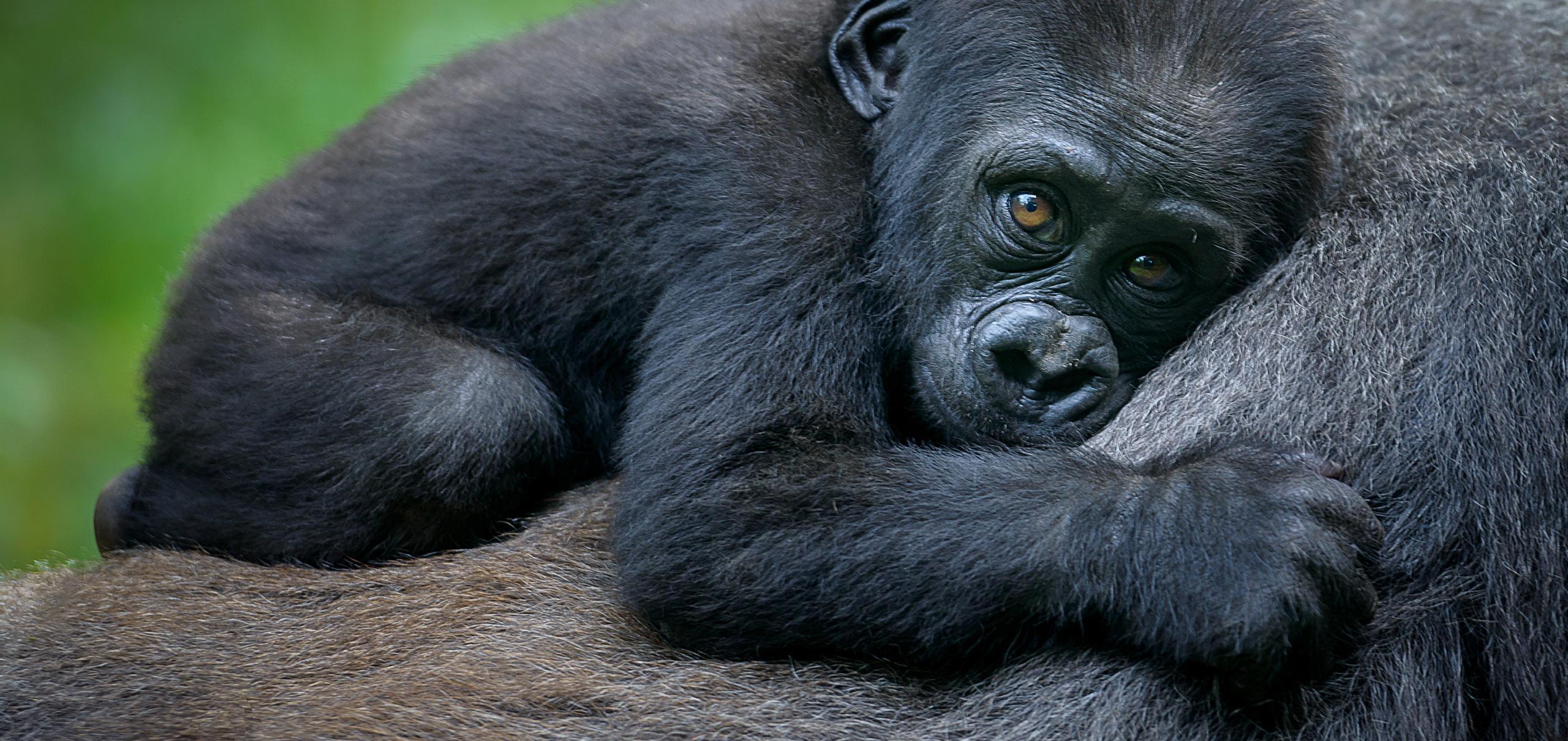
In November 2024, the death of a two-year old gorilla was deemed by the zoo “an accident resulting from human error.” Eyare, a young female gorilla was struck by a door when a member of zoo staff activated the wrong one in an attempt to separate Eyare from other gorillas to perform a training exercise. Eyare suffered traumatic head injuries and died shortly afterwards. Ten years earlier, a 16-month-old gorilla was crushed to death by a hydraulic door at San Francisco Zoo. This was despite the door having a manual shut-off switch that was not employed.52
In the wild, great apes predominantly consume a diet consisting of low-fat, high-fiber and very-low cholesterol browse and forage.53 Diets in zoos are often unnatural given the prevalence of cultivated fruit which is higher in sugar and lower in dietary fiber compared to wild fruit. Such diets can have negative impacts on primate physical health and behavior.54 Not only are great ape zoo diets often incomparable to diets in the wild but foraging and feeding behavioral opportunities are also lacking in captive environments.
Zoo industry guidelines acknowledge that providing adequate quantities of browse for gorillas and replicating the feeding ecology of orangutans is difficult for most zoos to achieve.55 The zoo industry also recognizes that many zoo-housed gorillas are overweight, while 54% of orangutans within the European breeding program were found to be overweight or obese.56 Type II diabetes is associated with obesity and is the most common form of diabetes seen in chimpanzees and orangutans.57 Obesity in captive orangutans can contribute to fatal acute respiratory distress syndrome during anesthesia.58 As with humans, all apes can suffer from various forms of arthritis, but especially chimpanzees and gorillas. It is believed that factors which contribute to osteoarthritis in humans may also result in similar outcomes for apes including injury, sedentary lifestyle, and obesity.59
Cardiovascular Disease
Heart disease is a leading cause of death for captive apes in both zoos and laboratories. One study found that 45% of bonobo, 41% of gorilla, 38% of chimpanzee, and 20% of orangutan deaths resulted from cardiovascular disease. 60 Correlations have been found between presentation of heart disease and obesity as well as chronic stress in captive apes. 61 Heart disease is reported to be “nearly absent in wild populations,” with cardiovascular diseases being identified during post-mortems in 3% of wild mountain gorillas and 18% of wild chimpanzees, suggesting that captivity is a defining factor in its development in great apes held in zoos. 62, 63 In March 2025, a male chimpanzee called Tombe died of a suspected heart attack at the age of 28, less than a month after being transferred from Colchester Zoo in England to Belfast Zoo in Northern Ireland. 64
Because of their close genetic relationship with humans, their complex social structures and behaviors, and the stress they endure in captivity, captive great apes are highly susceptible to various infectious diseases in zoos, including those passed from human to animal and vice versa (zoonoses).
Zoos act as the perfect breeding ground for infectious diseases due to small living spaces and forced and unnatural close proximity among animals and between animals and people.
Respiratory infections are common, with human respiratory viruses such as influenza, respiratory syncytial virus (RSV), and coronaviruses such as Covid-19, affecting great apes. 65 Several cases of human metapneumovirus (HMPV) outbreaks causing illness and deaths among great apes in zoos have been reported. In 2013, an HMPV infection that spread from humans to chimpanzees and back to humans was reported at a zoo in Slovenia. 66 Four members of a group of six chimpanzees at the zoo developed bronchopneumonia, and two of them died. Their keeper also became ill with the same virus. In June 2024, a group of bonobos at Cincinnati Zoo – the same zoo where Harambe was shot and killed – contracted HMPV. The zoo stated that the virus may have originated from food thrown into the apes’ enclosure by visitors. The virus caused flu-like symptoms in the bonobos. 67 In 2023, a young bonobo at the zoo died from RSV, a virus in the same family. 68 Bonobos are particularly susceptible to human RSV. The zoo made no statement regarding the source of the outbreak.
Tuberculosis, caused by Mycobacterium tuberculosis, another zoonotic disease, can also be transmitted between humans and apes, resulting in respiratory distress and potential fatalities. 69
During the Covid-19 pandemic, instances of SARS-CoV-2 infections among great apes in European zoos were documented, highlighting the susceptibility of these species to the virus. In November 2021, an outbreak at the Rotterdam Zoo in the Netherlands involved seven Western Lowland gorillas and four Asiatic lions. Investigations suggested that zookeepers were the probable source of the infections, although the exact transmission routes are undetermined. This incident underscored the potential for interspecies transmission within zoological settings. 70 Additional cases were identified in gorillas in zoos in Spain and the United States 71
However, it is not just zoo staff who may pose a risk to great apes in captivity, and vice versa, but also visitors who attend zoos, including volunteers, contractors, media, and the general public. In 2009, a respiratory disease, which was likely to have been transmitted from zoos visitors to a group of chimpanzees at Chester Zoo in the U.K. resulted in the death of three apes. 72
Upper respiratory tract disease is a significant cause of morbidity in captive orangutans, which can be fatal, particularly if it affects the laryngeal air sacs which play a role in vocalization, although the pathogenesis is often unknown. 73 Measles, caused by Morbillivirus hominis, can be fatal in great apes. 74
Gastrointestinal conditions, such as colitis and gastritis, are also prevalent in captive great apes. These conditions can be caused by bacterial infections such as Escherichia coli and Salmonella, parasites such as Giardia and Entamoeba histolytica, or diet-related issues.75 Gorillas are particularly susceptible to gastrointestinal diseases, which are exacerbated by stress and can often result in death. Helicobacter infections have been linked to chronic gastritis in gorillas and chimpanzees, similar to their role in human ulcers.76 In the northern hemisphere, chimps and gorillas kept in zoos are particularly susceptible to the canine tapeworm Echinococcosis multilocularis 77 During times of stress in the host, Balantidium coli parasites, which are commonly found in pigs and other farm animals, have been found to multiply in captive gorillas causing bowel inflammation that can also result in intestinal rupture and death. According to EAZA, chronic inflammation of the large intestines, including diseases mimicking human ulcerative colitis and Crohn’s disease, are very common in gorillas and can lead to bleeding into the gut and consequently to severe anemia, perforation and gut “leakage” into the abdominal cavity, and then to peritonitis and death.78 Despite its relatively common occurrence, this issue is poorly understood.
In August 2024, a gorilla at Jacksonville Zoo, FL, died from Shigella, a bacterial gastrointestinal infection typically spread through infected feces. Her death was swiftly followed by the death of two bonobos at the zoo. While apes can be asymptomatic carriers of Shigella, the zoo admitted that the infection may have come from zoo staff.79
When fights break out or individual animals are attacked in zoos, the inability to escape contributes to injuries or even deaths. In 2024, a chimpanzee at Edinburgh Zoo in the U.K. died because of injuries sustained in a fight.80 Thirty-one-year-old Rene was killed despite attempts by staff to intervene. A second chimp required surgery for his injuries but made a full recovery.
In 2011, Tiny, the first gorilla to be born at London Zoo in the U.K. for 22 years suffered a broken arm and later died of internal injuries at just seven months of age after he and his mother were attacked when they were introduced to a new male silverback, Kesho. An advisor to the The International Union for the Conservation of Nature (IUCN) on great apes and leading evolutionary anthropologist, Professor Volker Sommer, accused the zoo of being “incompetent” and stated the zoo should not keep apes anymore.81 Current zoo industry guidelines recognize the risk of infanticide when introducing a silverback to a new group where juveniles are present and stipulate that such introductions should not occur if infants are less than four years old.82
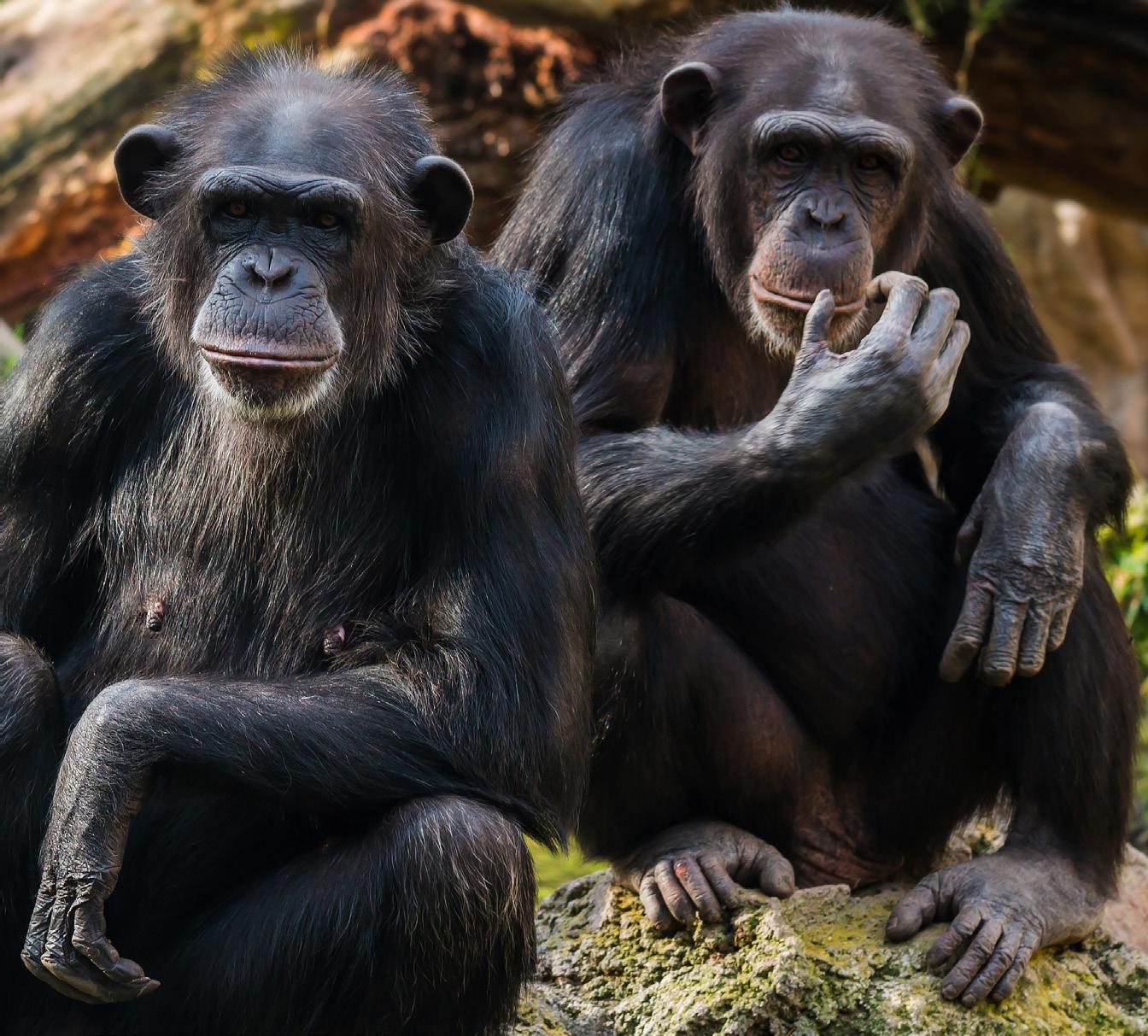
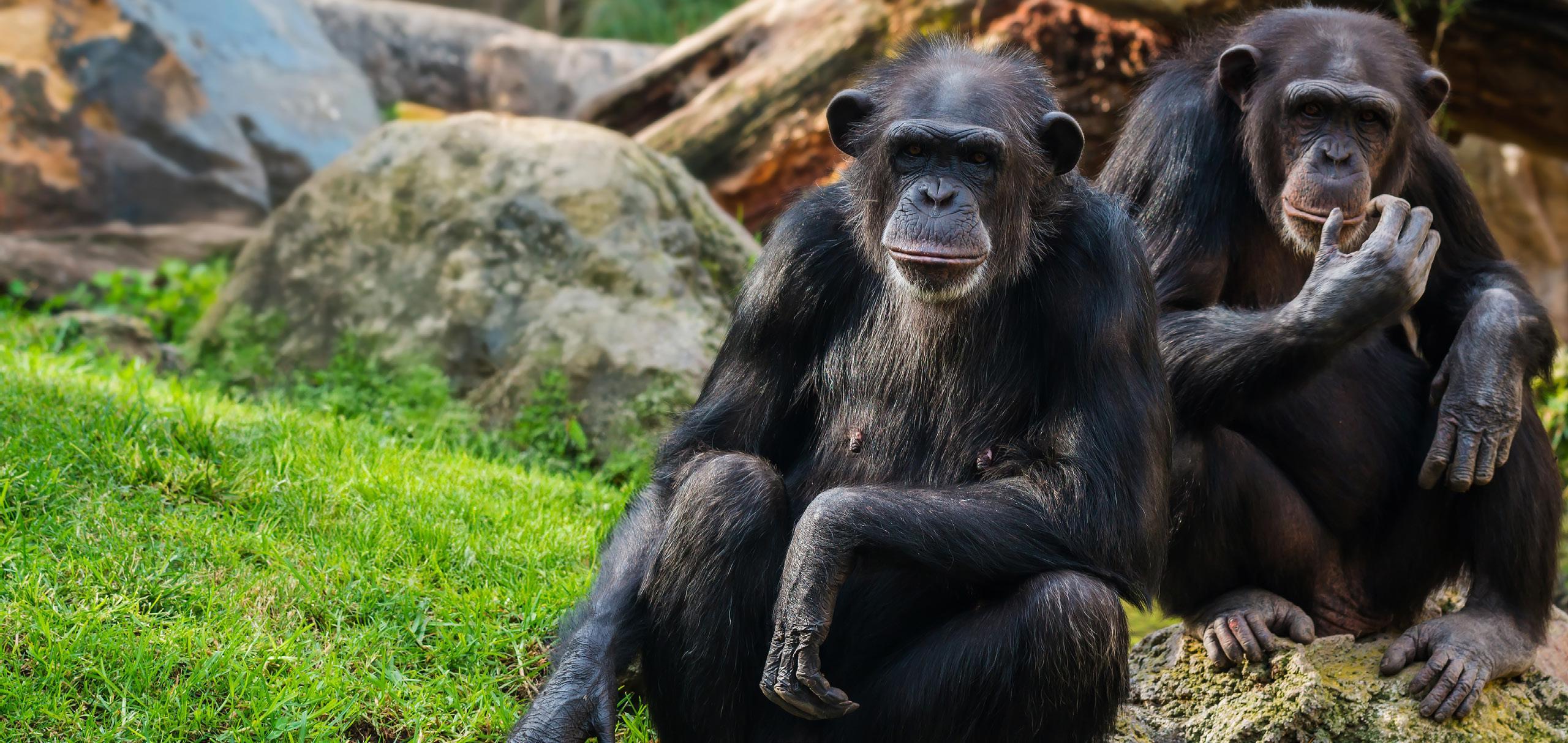
At Dublin Zoo in Ireland in 2013, Austin and Bossou were castrated and underwent dental procedures to remove their canines after they were identified as hybrids who could no longer participate in the captive breeding program for chimpanzees. Leaked veterinary records suggest that the dental surgery initially carried out on Austin was inappropriate as the surgeons were provided with an incorrect age at the time of procedure.
In 2014, a chimp formerly used in a laboratory, Marlon, was introduced to the group despite lacking “certain social skills.” 83 Austin retained dominance over the group until a female named Florin died in 2020, at which point Marlon assumed dominance over the group. Two months later, Bossou is reported to have suffered significant injuries to his fingers from Marlon. Despite this, it was not until four months later that Dublin Zoo undertook the first surgical amputation of damaged digits. Over a period of seven months, Bossou underwent four surgeries and had six digits amputated following repeated aggressive altercations.
With their enclosure ill-equipped to provide fission-fusion dynamics or allow Austin and Bossou to disperse like they would in the wild, in February 2022, Austin and Bossou along with an elderly female, Betty, were relocated to the zoo’s old gorilla house. Betty, aged 62, died in July 2024. 84
At the time of writing, the welfare of the two individuals remains unclear despite continued pressure put on the zoo by campaigners.
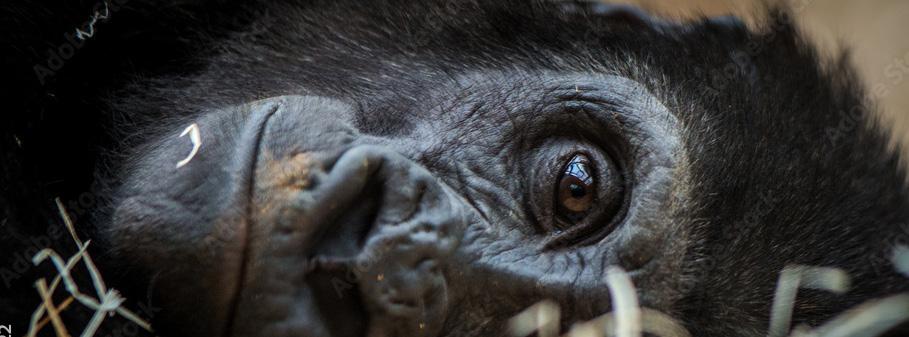
In addition to the risk of disease spread (zoonoses), great apes pose a serious safety risk to humans when they are kept in unnaturally close proximity with us in places like zoos. The tragic incident of a child falling into Harambe’s enclosure at Cincinnati Zoo (see case study above) made international news, but it was by no means an isolated incident.
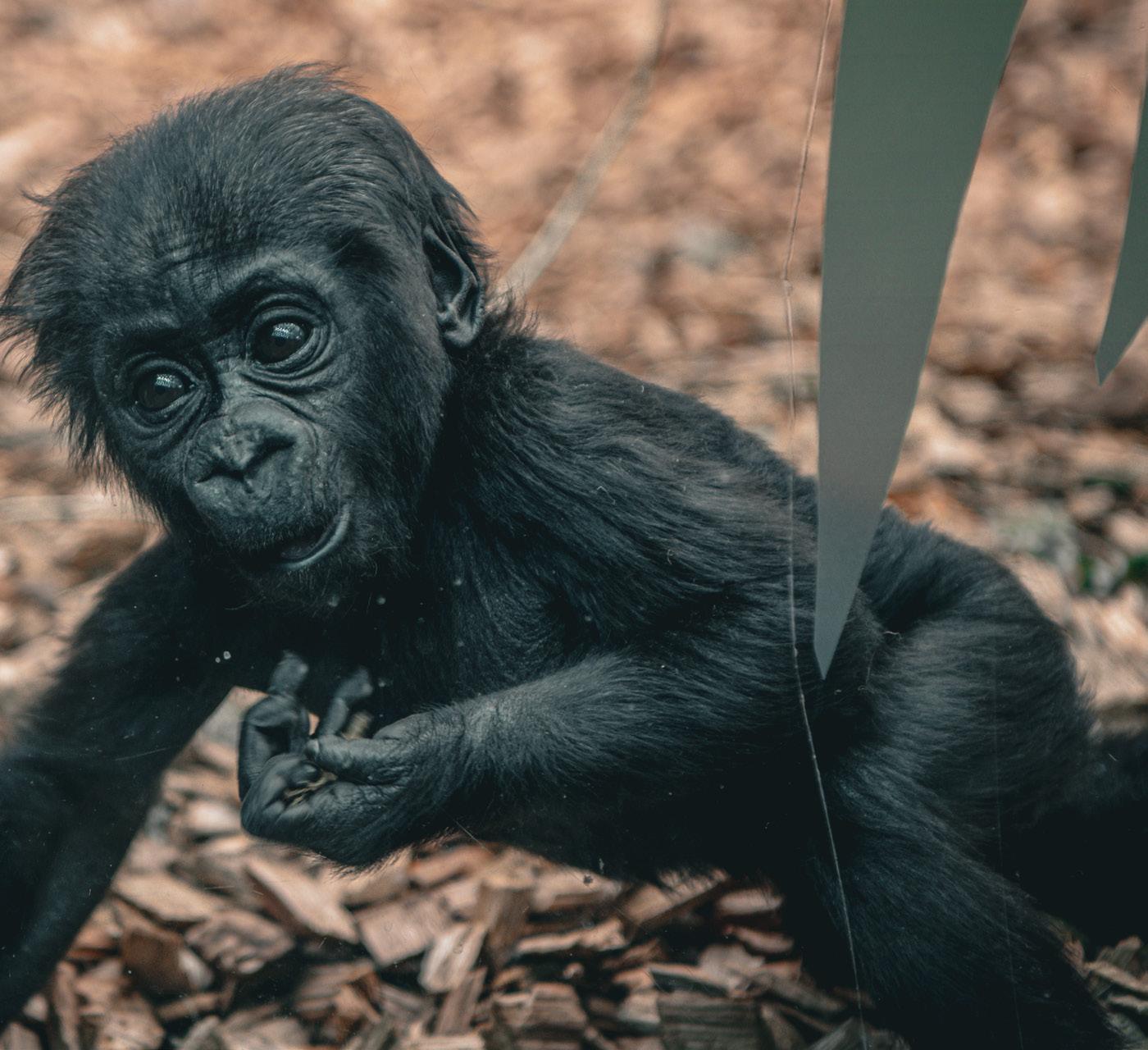
Born Free USA’s exotic animal incident database has recorded 31 incidents in which humans were attacked by primates at zoos in the United States since 1996. Eighteen incidents occurred at AZA accredited zoos, and 13 at non-accredited facilities. These figures are conservative as our database only includes English language incidents reported in the public domain.
Of the incidents reported, six involved great apes in accredited zoos biting off all or part of one or more fingers. Two people were critically injured, with one requiring extensive surgery. In addition to these injuries, three further victims were injured to the extent they required stitches. Twenty-three instances of attacks by primates were attacks by biting, with nine children documented as victims. Of all of the attacks, 16 involved at least one zoo employee, suggesting that even those people trained in the care of primates in zoos are at high risk of injury.
While most attacks involved great apes (n=20), attacks by other, smaller primates also caused significant injury. For example, in 2023, a child at Bow Champs Exotic Petting Zoo in Hidalgo County, TX was bitten on the face by a vervet monkey, and a capuchin bit three children at Zoological Wildlife Foundation in Miami, FL in 2024. A trainee zookeeper at Honolulu Zoo in Hawaii required 45 stitches in 2002 after being bitten by a siamang.
Four apes involved in attacks (including Harambe) were shot and killed as a result of attacks and one chimpanzee died after being electrocuted on power lines during an escape in which a zookeeper was injured.

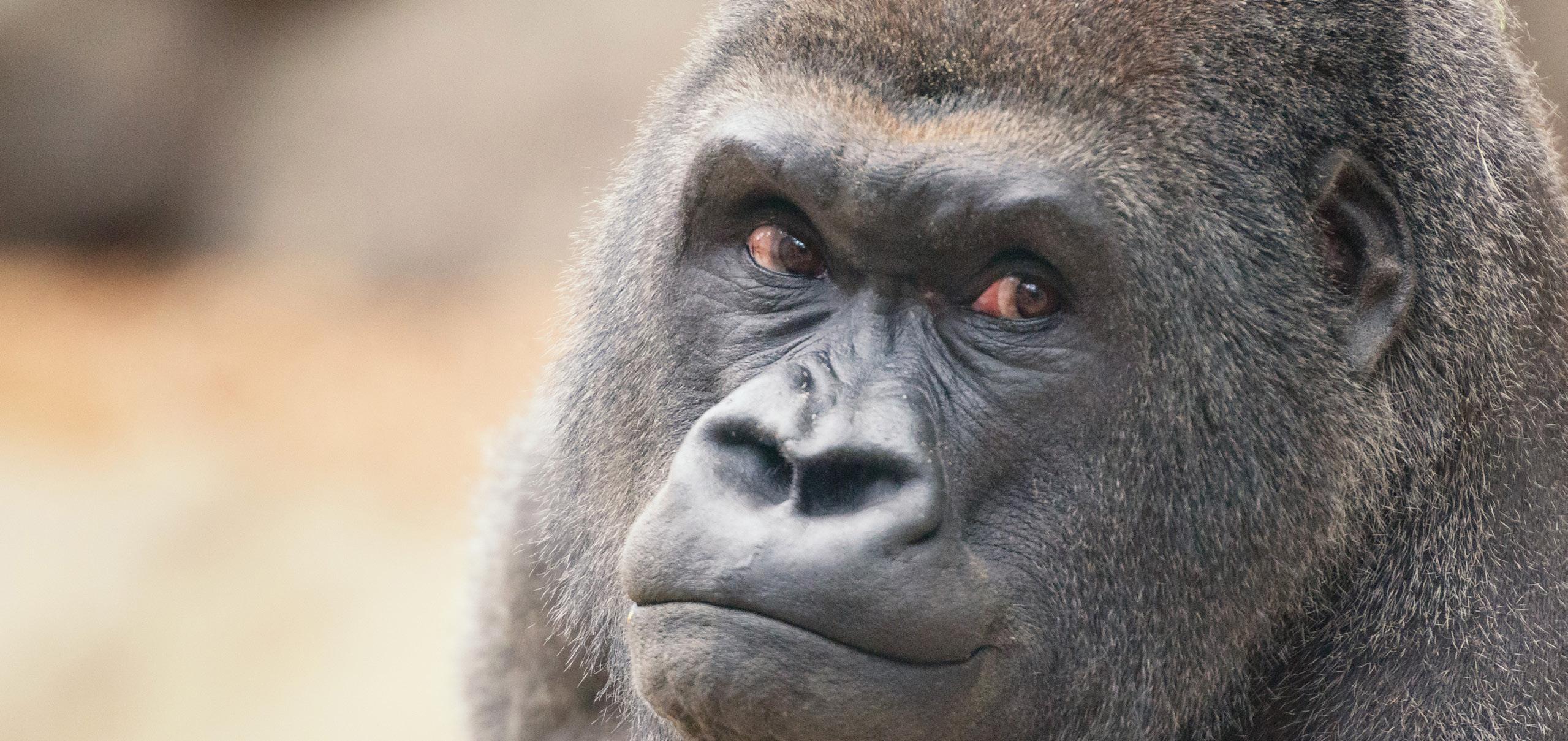
In 2003, Little Joe, a 5-foot-tall, 300-pound gorilla, escaped from his cage at the Franklin Park Zoo by scaling a 10-foot-wide, 12-foot-deep moat, getting past electric wire, and leaving the zoo grounds just before closing. During the escape, Little Joe attacked an 18-year-old woman, throwing her several feet in air, stepping on her, dragging her, and biting her on her back. The woman was holding a two-year-old girl who was snatched out of her arms and slammed to the ground. The child, whose front teeth were pushed back, was hospitalized and required stitches on her head. Little Joe was found two hours later, sitting at a bus stop, and was recaptured using tranquilizer darts as a crowd of more than 100 people watched. This was Little Joe’s second escape from the zoo that year.
THE IMPACT OF BREEDING GREAT APES IN ZOOS ON CONSERVATION
All great apes in zoos are managed as part of global breeding programs, ostensibly to meet “population goals” by “managing a healthy, genetically diverse, and demographically varied population.” 85 This somewhat vague mission does not explain how population goals are set, and sets maintaining captive populations as an end in itself, with no comment on how this might contribute to species survival in natural habitats. This is particularly important given that animals bred in captivity are rarely released into the wild. Despite the lack of clarity about the purpose of SSPs, zoos make strong claims that breeding in captivity serves an important conservation purpose. the birth of a bonobo at its facility in 2023, telling press: “He may not know it but ZeeZee’s new baby is a small but vital boost to the global population of western chimpanzees at a time when it’s most needed for this critically endangered species.”86 Claims such as these are disingenuous, given the IUCN’s stance on the ex-situ management of great apes. Captive
breeding is not included in the IUCN’s recommended conservation actions for any species of great or lesser ape. Captive breeding is not included in the IUCN’s recommended conservation actions for any species of great or lesser ape. In 2024, the IUCN Primate Specialist Group issued a statement expressly opposing the translocation of great apes from ex-situ zoo breeding programs outside of the species’ range states. Saying “translocating great apes from ex-situ zoo populations into wild great ape habitats poses risks with potentially serious negative consequences to wild great apes (conspecifics and other great ape species) that exceed potential conservation benefits.”87 The statement poses serious questions about the purpose of continued captive breeding of great apes. We were unable to find any response from members of the zoo industry to the statement.
Since the IUCN statement was released, zoos have continued to claim that great ape breeding programs benefit conservation, including Philadelphia Zoo, where an orangutan was born in late January 2025. In a statement, the zoo’s Vice President of Animal Wellbeing and Conservation said: “Working with the Association of Zoos and Aquariums to maintain a genetically healthy population in human care is vital to the survival of this species.” 88
Taxonomy of species is in constant flux as scientific data on species genetics has grown and improved. Animals once deemed to belong to a single species may be reclassified over time, often being split into either sub-species or their own species altogether. For example, bonobos were initially classified in 1929 as a subspecies of chimpanzee but were later elevated to species status in 1933. More recently, in 2001, gorillas were reclassified from one species to two, each with two sub-species. Orangutans have been reclassified from one species with two sub-species to two distinct species (Bornean and Sumatran). In 2017, a third species –Tapanuli – was identified. The Bornean orangutan is further split into three distinct sub-species.
Considering the foregoing, hybridization in zoos is inevitable as zoos have allowed animals belonging to what they (may have) believed to be the same species (or sub-species) to breed over time. Information regarding hybridization is often not publicized, but the 2015 orangutan studbook provides some data on this subject. Of the historic orangutan population in North America, 28% (n=266) are either hybrids or their species is unknown.
While animals in zoos do not get released to the wild except in extremely rare cases, zoos argue that breeding animals allows them to maintain an “insurance population” 89 of species in the event of their extinction or critical decline in the wild. The implication – if not the practice – is that these animals could be released to repopulate their natural habitats. This future potential is significantly complicated when hybridization occurs in captivity. The potential risks to existing populations when the “wrong” species is released into a home range that is not their own is difficult to quantify with the limited data available, but there are concerns among experts that the resulting “genetic translocation” may lead to negative impacts on the viability of already threatened species.90
Risks posed by the hybridization of great apes, along with the emphatic statement released by the International Union for Conservation of Nature Species Survival Commission (IUCN SSC) Primate Specialist Group Section on Great Apes that breeding in zoos is not a valid conservation action for great apes, begs the question: how can continued breeding of great apes in captivity be justified?
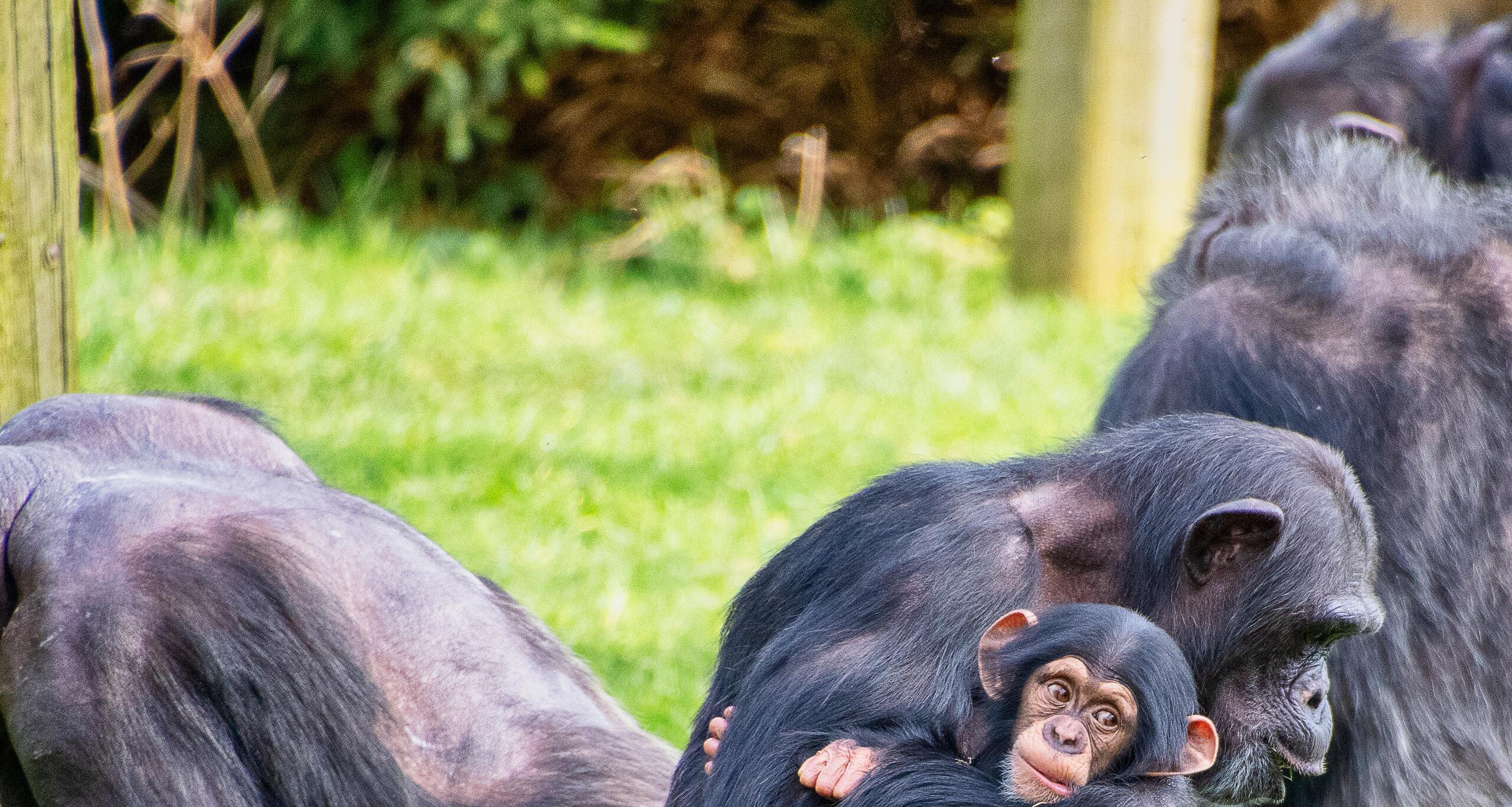
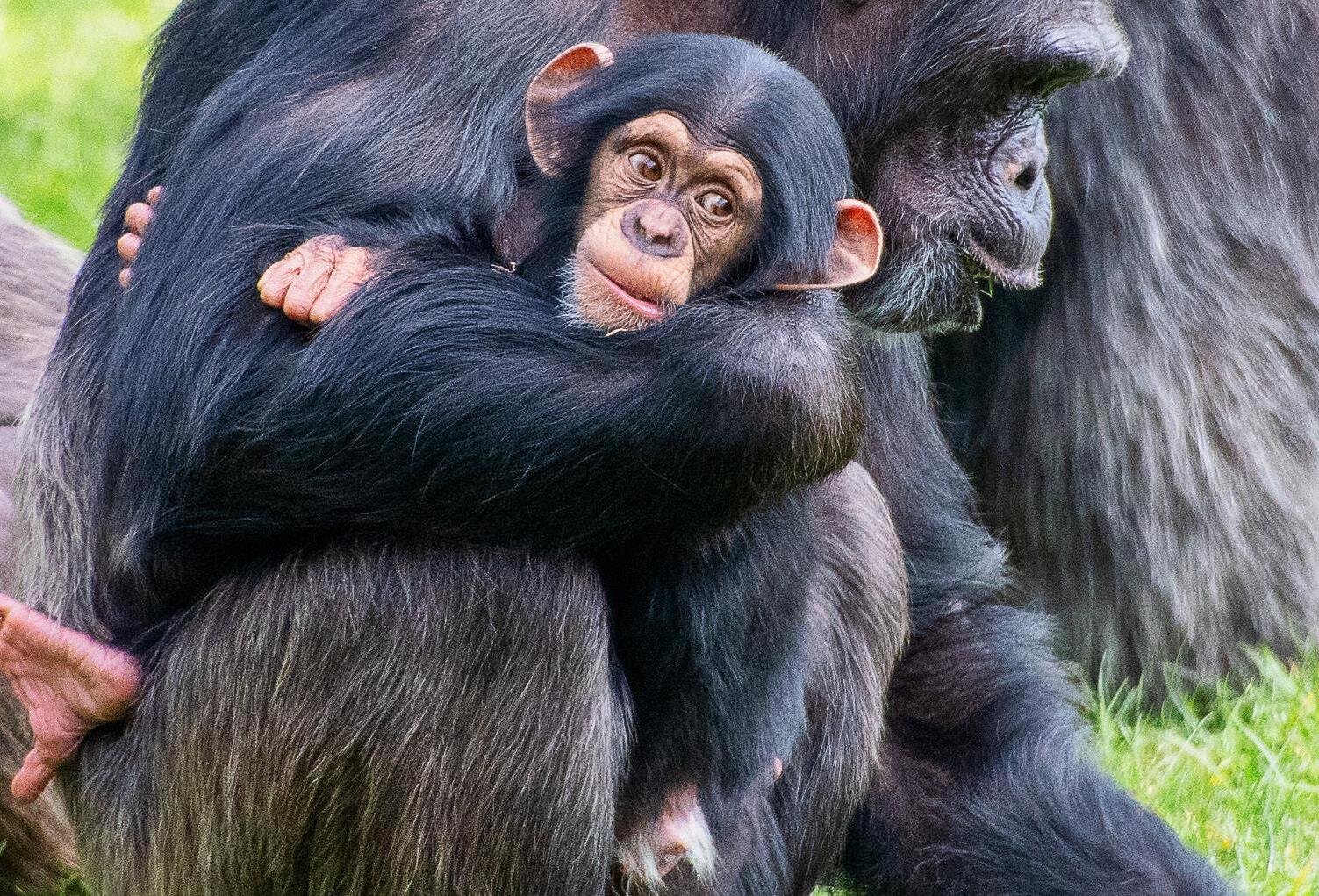
“We must make the right choice to phase out zoos, beginning with species like great apes who have very complex lives and needs and instead support rescue centers, sanctuaries and conservation organizations who can truly save species and populations and even meet reintroduction and genetic diversity needs, in their native countries. We can educate in so many more creative ways - pushing ourselves out of accepted tradition into innovation. Let’s focus fully on keeping wild individuals and populations wild and supporting the frontline organizations making this possible. Let’s redirect funding to the protection and conservation of wildlife where they live – to over-burdened rescue centers already providing care to individuals and maintaining populations of many of these same species in their home ranges. Let’s redirect our energy and dollars to those actively fighting wildlife crime and already operating conservation and reintroduction programs on the ground.”
In this report, we have laid out compelling evidence to challenge the keeping of great apes in zoos.
Suffering from poor health and welfare, unnatural social groupings, poor longevity, and other negative impacts, life in zoos for our closest cousins is bleak. Some may argue that the purpose of keeping apes captive is to protect their species from extinction. But we have seen that great apes are hardly ever released into the wild and that hybridization in zoos creates potential risks even if release were possible. Moreover, experts emphatically state that breeding apes in zoos is not a valid conservation action, yet breeding continues with zoos publicly claiming the importance of each captive birth.
Great apes in zoos pose risk to humans, and vice versa. Even trained members of caregiving staff have been severely injured in attacks, whether during escape incidents or simply when going about their normal days; for example, during feeding. When humans are attacked by captive apes – often because of human error or infrastructure failure – the animals may pay with their lives. Harambe the gorilla’s death is the most famous, but he is just one of multiple apes who have died in zoos following dangerous incidents.
Similarities between humans and apes make for increased risk of disease spread, placing apes in an unusually vulnerable position when it comes to the spread of zoonotic disease.
Overall, the litany of concerns clearly evidenced in this report makes the phasing out the keeping of great apes in zoos the kindest, safest, and most ethical solution. Based on the evidence, this approach is also simply the most logical. To continue to keep these complex beings in captivity for our entertainment can no longer be justified based on science, welfare, or animal and public safety.


Bornean Orangutan Pongo pygmaeus comprising three Sub-species - Northwest Bornean orangutan Pongo pygmaeus pygmaeus; Northeast P.p.morio and Central P.p.wurmbii
Range: Borneo, including Sabah and Sarawak (East Malaysia) and Kalimantan (Indonesia)
Habitat: Lowland tropical rainforest and peat swamp forest, mostly below 500m
Population: 134,200 (2018) estimated 53% decline 1999-2015
Life-span: 45-50 years
Major threats: Deforestation; fires; hunting for meat, live infants, or crop-raiding; climate change
Sumatran Orangutan Pongo abelii
Tapanuli Orangutan Pongo tapanuliensis
Range: Sumatra, Indonesia; Tapanuli found only in Batang Toru, south of Lake Toba
Habitat: Lowland rainforest, peat-swamp forest, and montane rainforest up to 1,500m
Population: Sumatran orangutan – 13,900 (2018) and Tapanuli orangutan – 800 (2017)
Life-span: 45 years (oldest Sumatran orangutan was Puan, 62, in Perth Zoo, Australia)
Major threats: Deforestation for plantations; habitat fragmentation by roads; dams flooding habitat; illegal killing of adults and capture of live infants for sale as pets; climate change
IUCN Status: All three species are Critically endangered and all are
CITES: Appendix I
Kinship: DNA shared with humans: 96.92%. Orangutans last shared a common ancestor with us 12-16 million years ago.
Bornean orangutans diverged from Tapanuli orangutan 670,000 years ago and from Sumatran orangutan 400,000 years ago.
Eastern Gorilla Gorilla beringei comprises two sub-species: Mountain gorilla Gorilla beringei beringei and Grauer’s or Eastern Lowland G.b.graueri
Range: Eastern Democratic Republic of Congo (DRC), SW Uganda and NW Rwanda
Habitat: Lowland to montane rainforest 600-2,900m (Grauer’s) and montane rainforest up to Afro-Alpine zone at 4,000m (Mountain)
Population: 3,800 – 6,800 (Grauer’s); 1063 (Mountain – 604 in Virungas, 459 in Bwindi/Serambwe)
Life-span: 35-45 years
Major threats: Illegal killing for meat (in parts of DRC), crop-raiding, capture of infants; disease; snares set for other animals; climate change
IUCN status: Critically endangered
CITES: Appendix I
Kinship: DNA shared with humans: 98.38% and last shared common ancestor: 6.2-8.4 million years ago. Western gorillas diverged from Eastern gorillas about 1.3 million years ago; Cross River gorillas diverged from Western Lowland about 18,000 years ago.
Bonobo Pan paniscus
Range: South of the curve of the River Congo, only in the Democratic Republic of Congo
Habitat: Tropical rainforest to forest savannah mosaic in the south of the species’ range
Population: 15-20,000 (2015)
Life-span: About 40 years
Major threats: Poaching for bushmeat, beliefs in medicinal properties and trade in live babies; disease; deforestation and forest fragmentation for logging and plantations; climate change
IUCN status: Endangered
CITES: Appendix I
Kinship: DNA shared with humans: 98.76% and last shared common ancestor: 4.6-6.2 million years ago; diverged from chimpanzees about 1 million years ago with formation of Congo River.
Chimpanzee Pan troglodytes comprises four sub-species: Central Pan troglodytes troglodytes; Western P.t.verus; Eastern P.t.schweinfurthii; Nigeria-Cameroon P.t.ellioti
Range: Chimpanzees are found in 21 countries across Africa from southern Senegal and Guinea in the west to western Uganda down to western Tanzania in the east and are extinct in a further three, possibly five, former range states
Habitat: Tropical rainforest, swamp forest, dry forest and gallery forest in savannah-woodland and edges of farmland
Population: 208,500 – 302,000 (all four sub-species combined, least numerous is P.t.ellioti at only 3,5009,000, all sub-species thought to be declining)
Life-span: About 40 years, exceptionally up to 70
Major threats: Poaching for bushmeat, beliefs in medicinal properties and trade in live babies; disease, especially ebola; deforestation and forest fragmentation for logging, mining, and plantations; retaliation for crop raiding; climate change
IUCN status: Endangered
CITES: Appendix I
Kinship: DNA shared with humans: 98.76% and last shared common ancestor: 4.6-6.2 million years ago
For further information:
Editors, & Refisch, Johannes & Wich, Serge & Williamson, Liz & Contributors, & Sop, Tene & Ancrenaz, Marc & Bergl, Richard & Greer, David & Humle, Tatyana & Kormos, Rebecca & Kühl, Hjalmar & Macfie, Elizabeth & Maisels, Fiona & Oates, John & Robbins, Martha & Sherman, Julie. (2018). GRASP and IUCN report to the CITES Standing Committee on the status of great apes. 10.13140/RG.2.2.24454.22085/1.
Redmond, Ian (Editor), 2018 Remembering Great Apes. Wildlife Photographers United.
More detailed information: https://wiki.iucnapesportal.org/index.php/The_A.P.E.S._Wiki and https://www. iucngreatapes.org/apes-database
1 Nature Publishing Group. (n.d.). Old World Monkeys. Nature News. https://www.nature.com/scitable/knowledge/library/old-worldmonkeys-83033815/
2. Edward Tyson. The Linda Hall Library. (2022, March 29). https://www.lindahall.org/about/news/scientist-of-the-day/edwardtyson/#:~:text=Edward%20Tyson%2C%20an%20English%20physician,it%20died%20soon%20after...
3 Nature Publishing Group. (2019, June 28). PASTCAST: Gorillas, man-eating monsters?. Nature News. https://www.nature.com/articles/d41586019-01883-3#:~:text=It%20had%20been%20just%20very,first%20in%20the%20late%201850s.
4 Hosey, G. (2023). The history of primates in Zoos. Nonhuman Primate Welfare, 3–29. https://doi.org/10.1007/978-3-030-82708-3_1
5 Ibid
6 Ibid
7 Library, P. D. S. P. (n.d.). 1835 Tommy First Chimpanzee in London Zoo - stock image - C011/0924. Science Photo Library. https://www. sciencephoto.com/media/431832/view/1835-tommy-first-chimpanzee-in-london-zoo
8 Jenny the orangutan. London Zoo. (n.d.). https://www.londonzoo.org/jenny-orangutan
9 Gorillas land. Gorillas Land | Gorillas under human care. (n.d.). https://www.gorillasland.com/gorillasunderhumancare.php
10 Hosey, G. (2023). The history of primates in Zoos. Nonhuman Primate Welfare, 3–29. https://doi.org/10.1007/978-3-030-82708-3_1
11 Western Lowland Gorilla. Smithsonian’s National Zoo and Conservation Biology Institute. (2016, April 25). https://nationalzoo.si.edu/animals/ western-lowland-gorilla#:~:text=In%20the%20wild%2C%20gorillas%20live,may%20live%20into%20their%2050s.
12 Western Lowland Gorilla. Denver Zoo. (2024, July 3). https://denverzoo.org/animals/western-lowland-gorilla/
13 Western Lowland Gorilla. Philadelphia Zoo. (2023, November 7). https://www.philadelphiazoo.org/animals/western-lowland-gorilla/
14 Western Lowland Gorilla. San Francisco Zoo & Gardens. (2025, February 10). https://www.sfzoo.org/western-lowland-gorilla/
15 Western Lowland Gorilla. San Francisco Zoo & Gardens. (2025, February 10). https://www.sfzoo.org/western-lowland-gorilla/
16 Brian M. Wood, David P. Watts, John C. Mitani, Kevin E. Langergraber. (2017). Favorable ecological circumstances promote life expectancy in chimpanzees similar to that of human hunter-gatherers. Journal of Human Evolution. Volume 105. Pages 41-56. (https://www.sciencedirect.com/ science/article/pii/S0047248417300052)
17 Orangutans: Frequently Asked Questions. Borneo Orangutan Survival. (n.d.). https://www.orangutan.or.id/orangutan-faqs
18 Sumatran orangutan. Denver Zoo. (2024a, July 3). https://denverzoo.org/animals/sumatran-orangutan/
19 Bornean orangutan. Zoo Atlanta. (2020, April 27). https://zooatlanta.org/animal/bornean-orangutan/
20 Stevens, J. (2020). EAZA Best Practice Guidelines for the bonobo (Pan paniscus) – First edition. European Association of Zoos and Aquariums, Amsterdam, The Netherlands, 268pp.
21 Ibid.
22 Loskutoff NM; Kraemer DC; Raphael BL; Huntress SL; Wildt DE; (1991). Advances in reproduction in captive, female great apes: Value of Biotechniques American Journal of Primatology. https://pubmed.ncbi.nlm.nih.gov/31952382/
23 Navigating chimpanzee society by fission-fusion. The Maryland Zoo. (2022, September 15). https://www.marylandzoo.org/news-and-updates/ zoogram/navigating-chimpanzee-society-by-fission-fusion/
24 Orangutan EEP Best Practice Guidelines 2018. European Association of Zoos and Aquariums. (n.d.). https://strapi.eaza.net/uploads/ 2018_OU_EEP_Best_Practice_Guidelines_final_NV_d8b74a1f2d.pdf
25 EAZA BEST PRACTICE GUIDELINES Great Ape Taxon Advisory Group Chimpanzees (Pan troglodytes). European Association of Zoos and Aquariums. (2022). https://strapi.eaza.net/uploads/Chimpanzee_BPG_22_doi_cb263b4e23.pdf
26 Soulé, M.E. What Is Conservation Biology? BioScience 1985, 35, 727–734.
27 Guardian News and Media. (2021, November 26). Campaigners criticise European zoo proposals to cull adult male gorillas. The Guardian. https://www.theguardian.com/world/2021/nov/26/campaigners-criticise-european-zoo-plans-to-cull-adult-male-gorillas
28 Position statement on management euthanasia/culling. European Association of Zoos and Aquariums. (2023). https://strapi.eaza.net/ uploads/2023_04_EAZA_Management_Euthanasia_Culling_Statement_4779d7a058.pdf
29 EAZA Best Practice Guidelines Western Lowland Gorilla. European Association of Zoos and Aquariums. (2024). https://strapi.eaza.net/ uploads/202406_EAZA_Western_lowland_gorilla_Best_Practice_Guidelines_3rd_edition_V2_954baec722.pdf
30 Orangutan EEP Best Practice Guidelines 2018. European Association of Zoos and Aquariums. (n.d.). https://strapi.eaza.net/uploads/ 2018_OU_EEP_Best_Practice_Guidelines_final_NV_d8b74a1f2d.pdf
31 EAZA BEST PRACTICE GUIDELINES Great Ape Taxon Advisory Group Chimpanzees (Pan troglodytes). European Association of Zoos and Aquariums. (2022). https://strapi.eaza.net/uploads/Chimpanzee_BPG_22_doi_cb263b4e23.pdf
32 Baker, L.; Draper, C.; Ramp, D. Why Compassionate Conservation Can Improve the Welfare of Wild Animals. In Proceedings of the Universities Federation for Animal Welfare Conference, Zagreb, Croatia, 14–15 July 2015.
33 Western Lowland Gorilla. Smithsonian’s National Zoo and Conservation Biology Institute. (2016a, April 25). https://nationalzoo.si.edu/animals/ western-lowland-gorilla
34 Boesch, C., Brüne, M., Buirski, P., Byrd, L. D., Waal, F. B. M. de, Fehr, E., Finch, C. E., Hugo, C., Maki, S., Mason, W. A., Alford, P. L., Allman, J. M., Aureli, F., Baker, K. C., Bard, K. A., Beck, B. B., Bennett, A. J., Berkson, G., Berlyne, D. E., … Council, N. R. (2006, December 1). Psychopathology in great apes: Concepts, treatment options and possible homologies to human psychiatric disorders. Neuroscience & Biobehavioral Reviews. https://www.sciencedirect.com/science/article/abs/pii/S0149763406001060
35 Braitman, L. (2014, July 15). Even the gorillas and bears in our zoos are hooked on Prozac. Wired. https://www.wired.com/2014/07/ animal-madness-laurel-braitman/#:~:text=Nearly%20half%20of%20the%2031,Mellaril%20had%20all%20been%20tried.
36 Ibid
37 Tutin, C. E. (1996). Ranging and social structure of lowland gorillas in the Lopé Reserve, gabon. Great Ape Societies, 58–70. https://doi.org/10.1017/cbo9780511752414.00
38 Vieira, W. F., Kerry, C., & Hockings, K. J. (2019, July). A comparison of methods to determine chimpanzee home-range size in a forestfarm mosaic at madina in Cantanhez National Park, Guinea-Bissau. Primates; journal of primatology. https://pmc.ncbi.nlm.nih.gov/articles/ PMC6612355/#:~:text=However%2C%20significant%20variability%20has%20been,Senegal)%20(Pruetz%202006).
39 van Schaik, C. P., & Singleton, I. (2001, January). Orangutan Home Range Size and Its Determinants in a Sumatran Swamp Forest. International Journal of Primatology. https://www.researchgate.net/publication/226112409_Orangutan_Home_Range_Size_and_Its_Determinants_in_a_ Sumatran_Swamp_Forest
40 EAZA Best Practice Guidelines Western Lowland Gorilla. European Association of Zoos and Aquariums. (2024). https://strapi.eaza.net/ uploads/202406_EAZA_Western_lowland_gorilla_Best_Practice_Guidelines_3rd_edition_V2_954baec722.pdf
41 Biediger, S. (2024, January 16). San Antonio Zoo plans gorilla habitat roomy enough for 8. San Antonio Report. https://sanantonioreport.org/ san-antonio-zoo-finalizing-plans-gorilla-habitat/
42 Omaha Henry Doorly Zoo Hubbard Orangutan Forest. Holland Basham Architects. (2024, December 20). https://hollandbasham.com/projects/ omaha-henry-doorly-zoo-hubbard-orangutan-forest/
43 Fraser, Q. (2023, February 6). Omaha’s Henry Doorly Zoo unveils exhibit plans putting people face-to-face with orangutans. KETV. https://www. ketv.com/article/omaha-henry-doorly-zoo-orangutan-exhibit-plans/42777832#:~:text=OMAHA%2C%20Neb.%20%E2%80%94,Hubbard%20 Orangutan%20Forest%20on%20Friday.
44 Zoo enclosure sizes (revised) - zoochat. (n.d.). https://www.zoochat.com/community/threads/zoo-enclosure-sizes-revised.465984/
45 Ross, S. R., Leahy, M., Hopper, L. M., Moyse, J. A., & sLeinwand, J. G. (2021, January 31). The use of biofloors in Great Ape Zoo Exhibits | Journal of Zoo and Aquarium Research. Journal of Zoo and Aquarium Research. https://jzar.org/jzar/article/view/544
46 Bekhechi, M. (2016, June 1). What’s more upsetting than harambe the gorilla’s death? the reality of his life. The Independent. https://www.theindependent.com/voices/the-only-thing-more-upsetting-than-harambe-the-gorilla-s-death-was-the-reality-of-his-life-a7057981.html
47 ABC News Network. (2016, May 29). 3-Year-Old Who Fell Into Cincinnati Zoo’s Gorilla Enclosure Expected to Recover. ABC News. https:// abcnews.go.com/US/year-picked-gorilla-cincinnati-zoo-escapes-injury/story?id=39454916
48 Angier, N. (2016, June 6). Do gorillas even belong in zoos? Harambe’s death spurs debate – The New York Times. New York Times. https://www.nytimes.com/2016/06/07/science/gorilla-shot-harambe-zoo.html
49 Angier, N. (2016, June 6). Do gorillas even belong in zoos? Harambe’s death spurs debate - The New York Times. New York Times. https://www. nytimes.com/2016/06/07/science/gorilla-shot-harambe-zoo.html
50 Guardian News and Media. (2023, December 5). One Swedish zoo, seven escaped chimpanzees. The Guardian. https://www.theguardian.com/ world/2023/dec/05/one-swedish-zoo-seven-escaped-chimpanzees
51 Frågor & Svar. (n.d.). https://www.furuvik.se/viktig-information/fragor-svar
52 Sernoffsky, E. (2014, November 9). S.F. Zoo’s hydraulic door that killed Gorilla had shut-off switch. SFGate. https://www.sfgate.com/news/article/ Hydraulic-door-that-killed-baby-gorilla-at-SF-Zoo-5882033.php
53 Popovich , D. G., Jenkins , D. J. A., Kendall , C. W. C.,Dierenfeld , E. S., Carroll , R. W., T Ariq , N. & Vid-Gen , E. (1997): The Western Lowland Gorilla Diet has Implications for the Health of Humans and Other Hominoids. Journal of Nutrition 127: 2000–2005.
54 Hammerton, R., Hunt, K. A., & Riley, L. M. (2019, October 31). An investigation into keeper opinions of great ape diets and abnormal behaviour Journal of Zoo and Aquarium Research. https://jzar.org/jzar/article/view/415
55 EAZA Best Practice Guidelines Western Lowland Gorilla. European Association of Zoos and Aquariums. (2024). https://strapi.eaza.net/ uploads/202406_EAZA_Western_lowland_gorilla_Best_Practice_Guidelines_3rd_edition_V2_954baec722.pdf
56 Ibid.
57 Andrade M.C., Higgins P.B., Mattern V.L., De La Garza M.A., Brasky K.M., Voruganti V.S., Comuzzie A.G. Morphometric variables related to metabolic profile in captive chimpanzees (Pan troglodytes) Comp. Med. 2011;61:457–461.
58 Orangutan EEP Best Practice Guidelines 2018. European Association of Zoos and Aquariums. (n.d.). https://strapi.eaza.net/uploads/2018_OU_ EEP_Best_Practice_Guidelines_final_NV_d8b74a1f2d.pdf
59 Lowenstine, L. J., McManamon, R., & Terio, K. A. (2018). Apes. In Pathology of wildlife and zoo animals (pp. 375-412). Academic Press.
60 Comparative pathology of aging great apes - L. J. Lowenstine, R. McManamon, K. A. Terio, 2016. (n.d.-a). https://journals.sagepub.com/ doi/10.1177/0300985815612154
61 Stevens, J. (2020). EAZA Best Practice Guidelines for the bonobo (Pan paniscus) – First edition. European Association of Zoos and Aquariums, Amsterdam, The Netherlands, 268pp.
62 Kambale , E. S., R Amer , J. C., G Ilardi , K., C Ranfield ,M. & L Owenstine , l. (2014). Cardiovascular and hepatic disease in wild eastern lowland gorillas (Gorillaberingei graueri). Proceedings of the American Association of Zoo Veterinarians 2014: 115
63 Terio , K. A., K Insel , M. J., R Aphael, J., Mlengeya ,T., L Ipende, I., K Irchhoff , C. A., Gilagiza, B., W Il-Son, M. L., Kamenya , S., E Stes, J. D., Keele , B. F.,Rudicell , R. S., L Iu, W., Patton , S., Collins , A.,Hahn , B. H., T Ravis , D. A. & L Onsdorf , E. V. (2011). Pathologic lesions in chimpanzees (Pan trogylodytes schweinfurthii) from Gombe National Park, Tanzania, 2004–2010. Journal of Zoo and Wildlife Medicine 42:597–607.
64 Tombe. Colchester Zoological Society. (2025, April 1). https://www.colchesterzoologicalsociety.com/2025/04/tombe/
65 Voevodin A.F. and Marx Jr P.A. 2009. Simian Virology. Wiley-Blackwell. Ames, Iowa. 511 pp. ISBN 978-0-81382-423-1.
66 Uršič, T. et al. (2020). Outbreak of Human Metapneumovirus Infection in Zoo, Slovenia. Emerging Infectious Diseases 26 (8). DOI: 10.3201/ eid2608.200125
67 Fox19. (2024, June 6). Cincinnati Zoo Bonobos catch respiratory virus after food reportedly thrown into habitat. The Enquirer. https://eu.cincinnati.com/story/news/2024/06/06/in-a-facebook-post-thursday-the-zoo-said-their-bonobo-troop-has-been-off-habitat-inrecent-days-beca/74001615007/
68 FOX19 Digital Staff and Emily Van de Riet. (2023, November 21). Zoo mourns the death of 3-year-old bonobo amid RSV outbreak. https://www.newschannel10.com. https://www.newschannel10.com/2023/11/21/zoo-mourns-death-3-year-old-bonobo-amid-rsv-outbreak /
69 Palmer, S., et al. 2012. Tuberculosis in zoo primates: risks and management. Veterinary Pathology, 49(5), 871-88970
70 Dusseldorp, F. et al. 2023. Sars-Cov-2 in lions, gorillas and zookepers in the Rotterdam zoo, the Netherlands, a One Health investigation, November 2021. Euro Surveill. 28(28): 2200741. DOI: 10.2807/1560-7917.ES.2023.28.28.2200741.
71 Cano-Terriza D, et al. 2024. SARS-CoV-2 in Captive Nonhuman Primates, Spain, 2020-2023. Emerg Infect Dis. 30(6):1253-1257. doi: 10.3201/ eid3006.231247.
72 Unwin, S., Chantrey, J., & Chatterton, J. (2013, March). Management of severe respiratory tract disease caused by human respiratory syncytial virus and streptococcus pneumoniae in captive chimpanzees (Pan troglodytes). Journal of Zoo and Wildlife Medicine . https://pubmed.ncbi.nlm. nih.gov/23505710/
73 Zimmermann N. et al. (2011). Upper respiratory tract disease in captive orangutans (Pongo sp.): prevalence in 20 European zoos and predisposing factors. J Med Primatol. 40(6):365-75. doi: 10.1111/j.1600-0684.2011.00490.x.
74 Liptovszky, M., Poitier, R., Redrobe, S., Schüle, A., & Steinmetz, H. W. (2019). EAZA Great Ape TAG Veterinary Guidelines.
75 Benavides, J. A., et al. 2012. Enteric bacterial pathogens in captive primates. Journal of Zoo and Wildlife Medicine, 43(4), 617-624.
76 Eppinger, M. et al. 2014. Helicobacter infections in great apes. Infectious Diseases in Primates, 78(2), 233-245.
77 Redrobe, S. (2019, January 1). Eaza Great Ape Tag Veterinary Guidelines (July 2019) veterinary guidelines for great apes index. EAZA GREAT APE TAG VETERINARY GUIDELINES (July 2019). https://www.academia.edu/39966955/EAZA_GREAT_APE_TAG_VETERINARY_GUIDELINES_ July_2019_Veterinary_Guidelines_for_Great_Apes_Index
78 EAZA Best Practice Guidelines Western Lowland Gorilla. European Association of Zoos and Aquariums. (2024). https://strapi.eaza.net/ uploads/202406_EAZA_Western_lowland_gorilla_Best_Practice_Guidelines_3rd_edition_V2_954baec722.pdf
79 Lynch, J. (2024, August 29). 3 apes die from contagious bacterial infection within days of each other at Jacksonville Zoo. CNN. https://www.cnn.com/2024/08/29/us/jacksonville-zoo-primates-contagious-bacteria-infection/index.html#:~:text=Two%20brother%20 bonobos%2C%20Jumanji%20and,bacteria%20for%20an%20unknown%20reason.
80 BBC. (2024, July 8). Edinburgh Zoo Chimp dies after suffering severe injuries in fight. BBC News. https://www.bbc.com/news/articles/ c25lz4q5d2ro
81 BBC. (2011, May 14). London Zoo criticised over death of Baby gorilla tiny. BBC News. https://www.bbc.co.uk/news/uk-13401877
82 EAZA Best Practice Guidelines Western Lowland Gorilla. European Association of Zoos and Aquariums. (2024). https://strapi.eaza.net/ uploads/202406_EAZA_Western_lowland_gorilla_Best_Practice_Guidelines_3rd_edition_V2_954baec722.pdf
83 Annual report 2022 Zoological Society of Ireland. Zoological Society of Ireland. (2023). https://www.dublinzoo.ie/wp-content/uploads/2023/09/ Dublin-Zoo-Annual-Report-2022-Digital.pdf
84 News, R. (2024, July 24). Betty, the oldest chimp in human care, dies in Dublin Zoo. RTE.ie. https://www.rte.ie/news/ireland/2024/0723/1461444dublin-zoo-chimpanzee/
85 Animal programs. About Our Animal Programs | Association of Zoos & Aquariums. (n.d.). https://www.aza.org/animal-programs#:~:text=An%20 AZA%20Species%20Survival%20Plan,community;%20is%20selected%20by%20TAGs
86 Scott, C. (2023). Boost for conservation as critically endangered chimpanzee born at Chester Zoo. Independent. https://www.independent.co.uk/ news/uk/chimpanzees-jeff-beck-africa-chester-nigeria-b2260838.html
87 Section on Great Apes, IUCN SSC Primate Specialist Group. (2024). IUCN SSC PSG SGA Statement on the Translocation of Great Apes from Zoos to African Great Ape Range States. IUCN Great Apes. https://www.iucngreatapes.org/_files/ ugd/4db102_32e674e1f18d4835bda3ed3d50c8d6af.pdf
88 Linderman, K. (2024). Endangered orangutan is a Pennsylvania zoo’s ‘newest bundle of joy.’ See the newborn. MSN. https://www.msn.com/enus/pets-and-animals/wildlife/endangered-orangutan-is-a-pennsylvania-zoo-s-newest-bundle-of-joy-see-the-newborn/ar-BB1pThsO?ocid=Bing NewsVerp&apiversion=v2&noservercache=1&domshim=1&renderwebcomponents=1&wcseo=1&batchservertelemetry=1&noservertelemetry=1
89 Borrell, J. (n.d.). E ight reasons why zoos are good for conservation. Royal Society of Biology. https://www.rsb.org.uk/biologist-opinion/eightreasons-why-zoos-are-good-for-conservation
90 Max-Planck-Gesellschaft. (2016, February 25). “Cocktail” orangutans leave researchers shaken and stirred. Science Daily. https://www. sciencedaily.com/releases/2016/02/160225135720.htm

